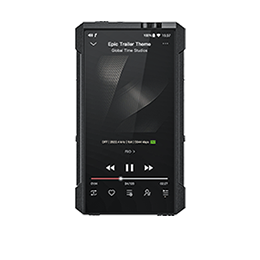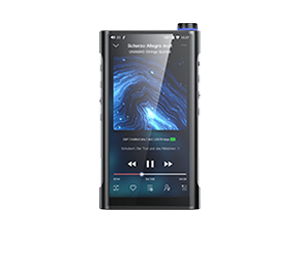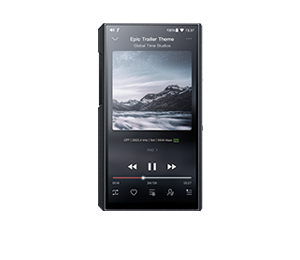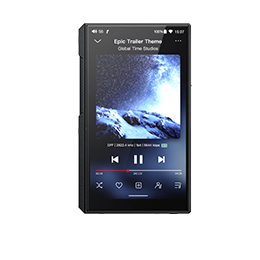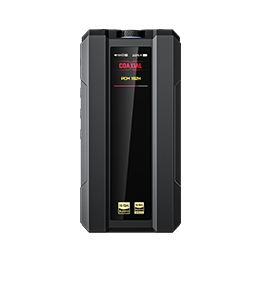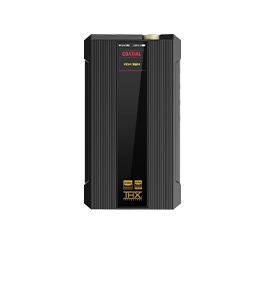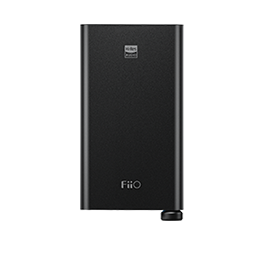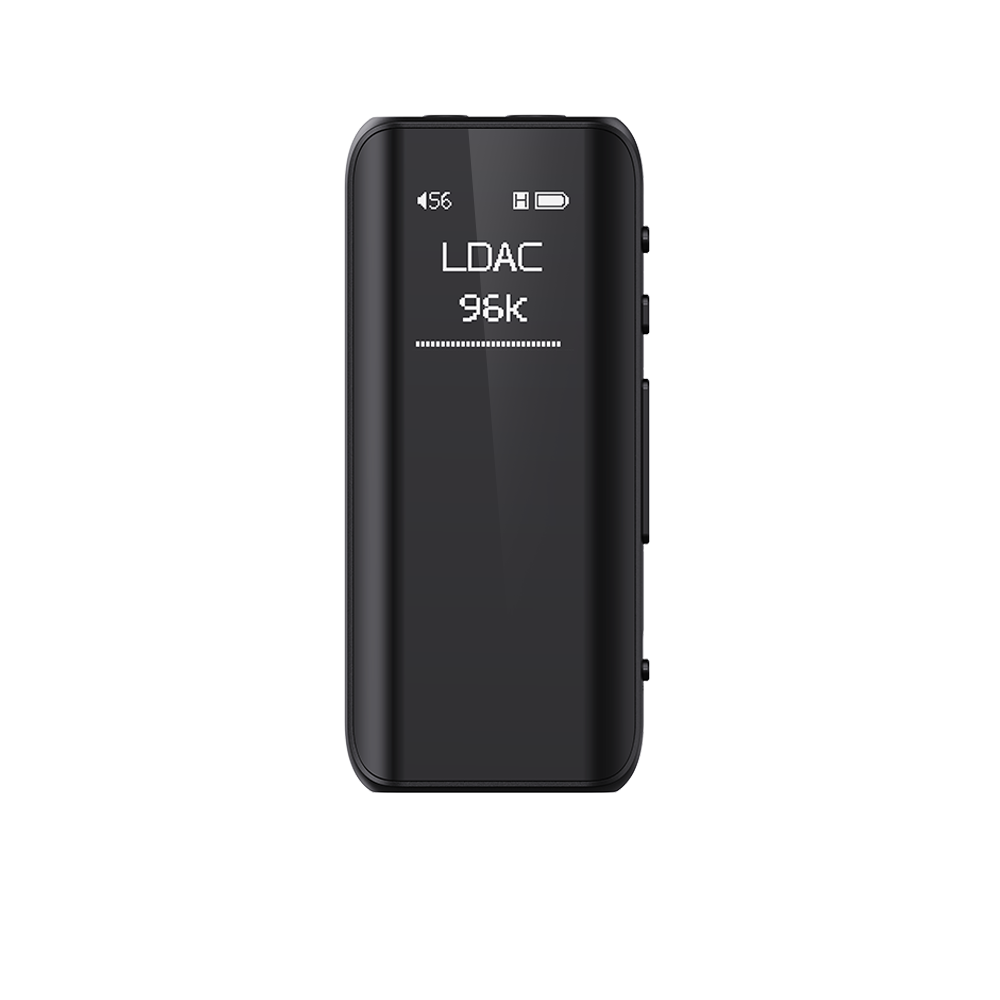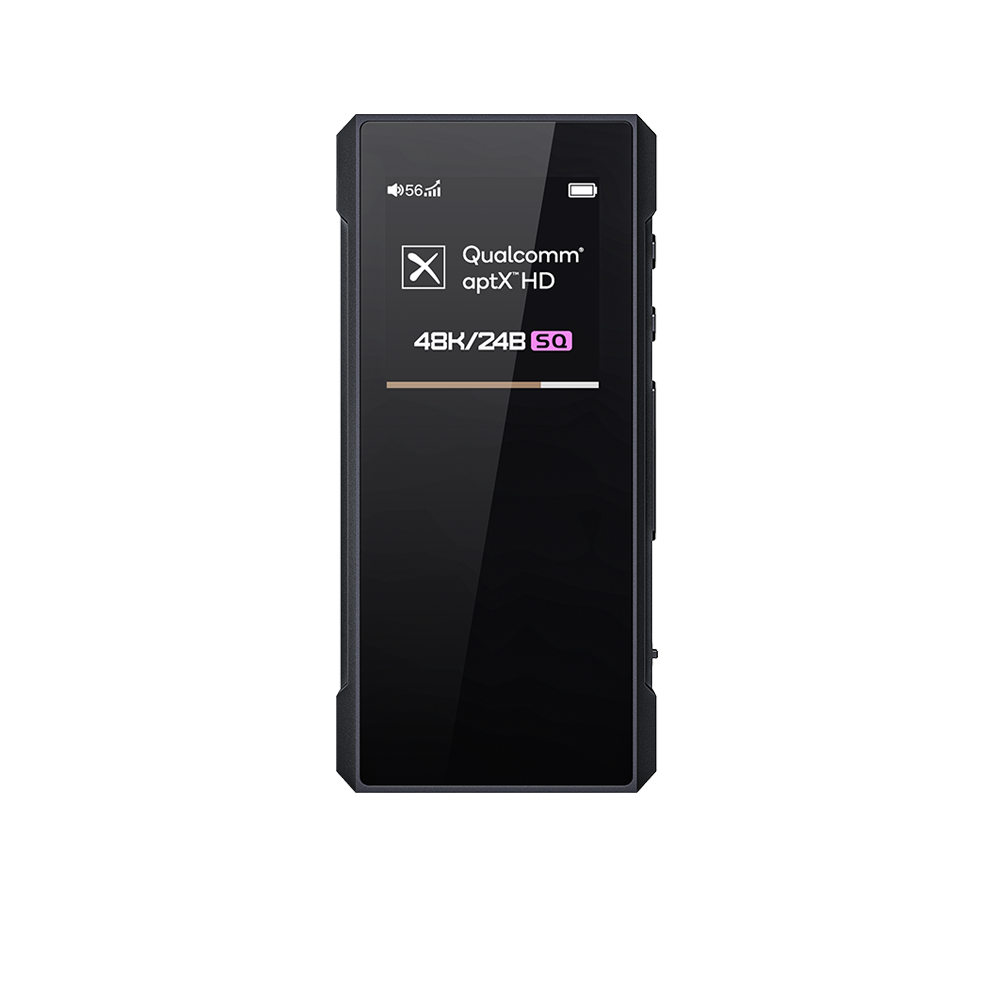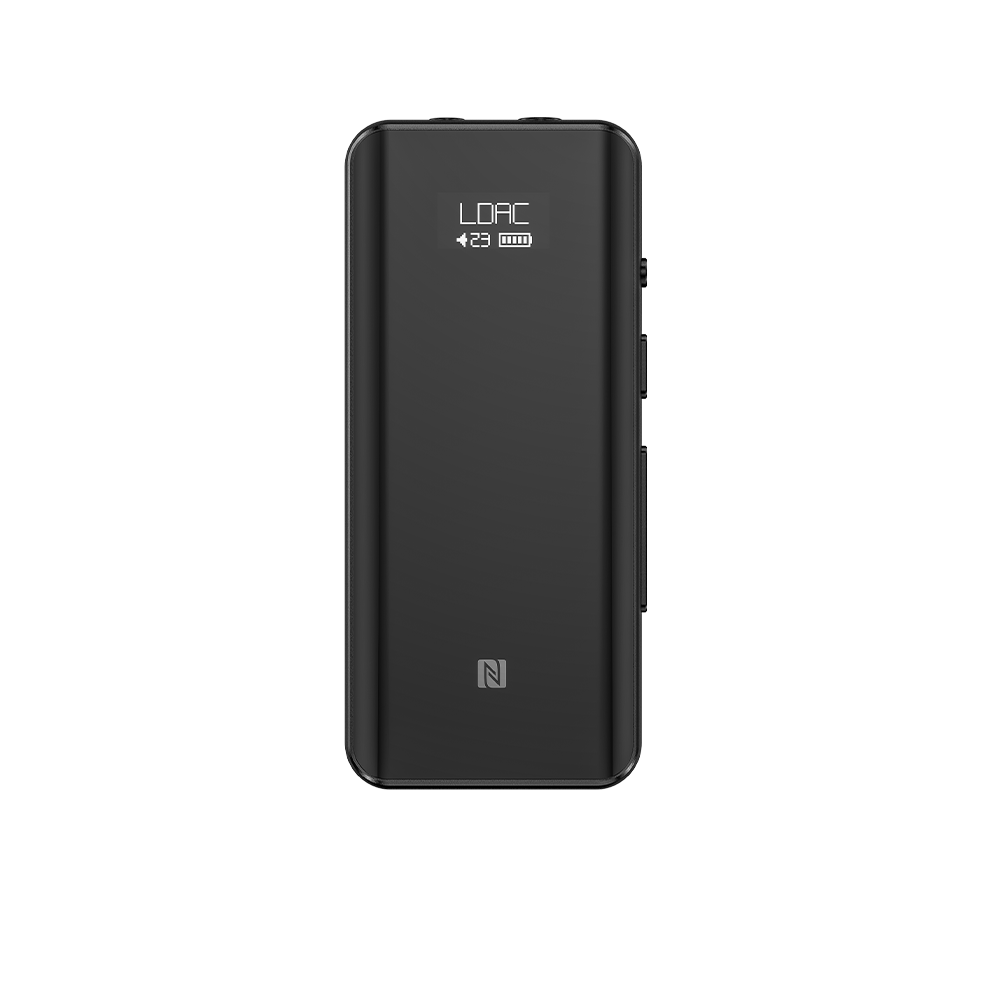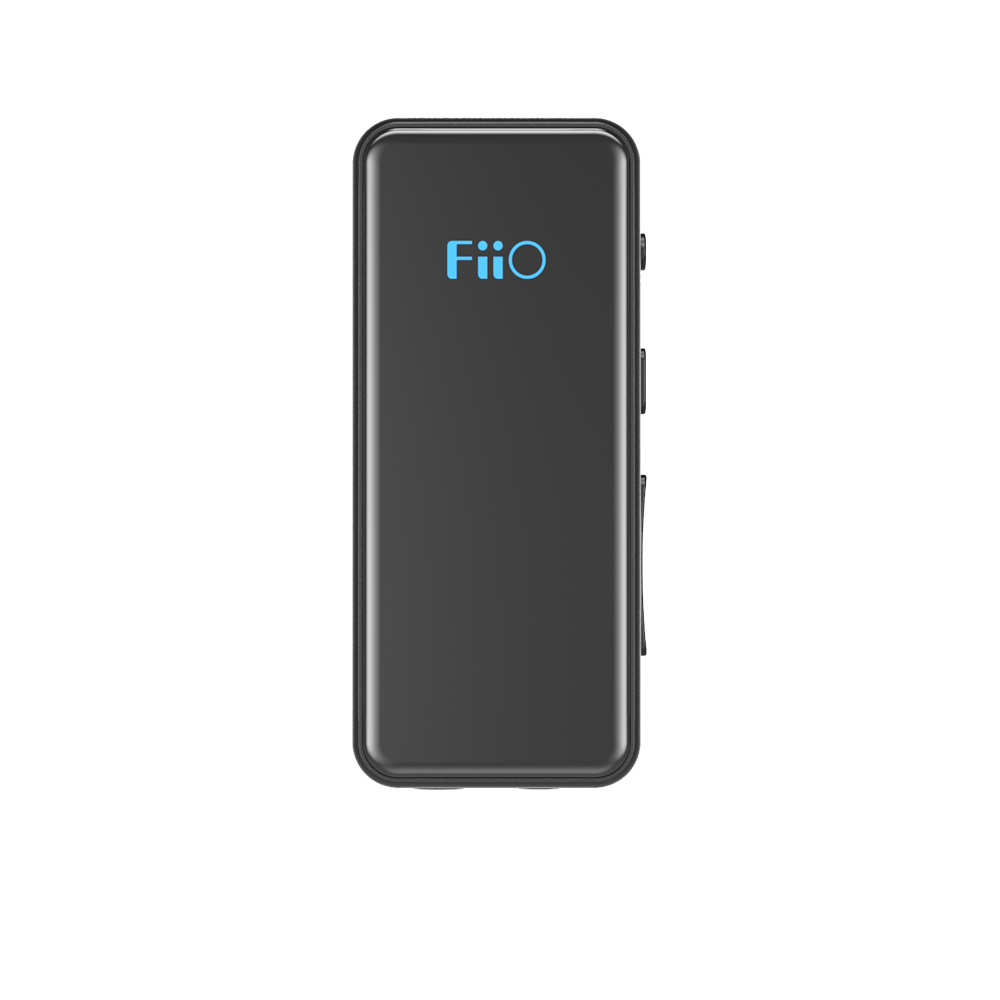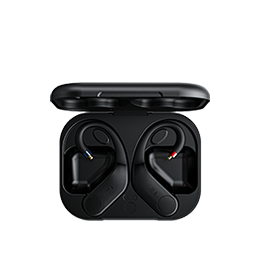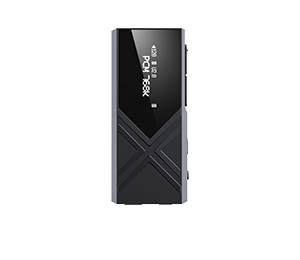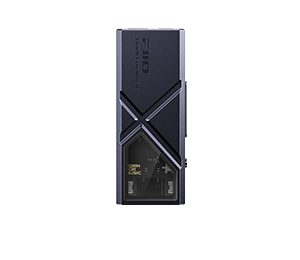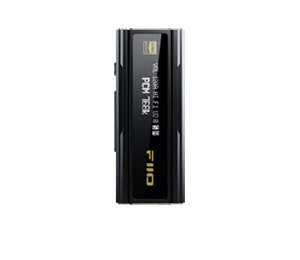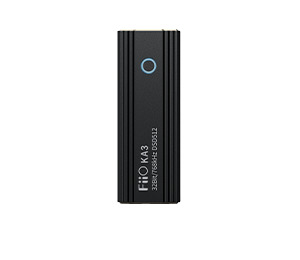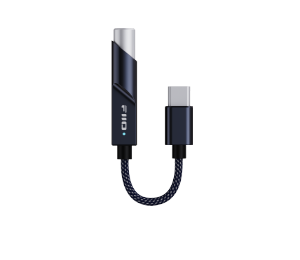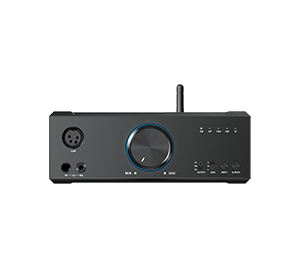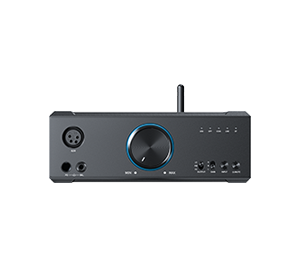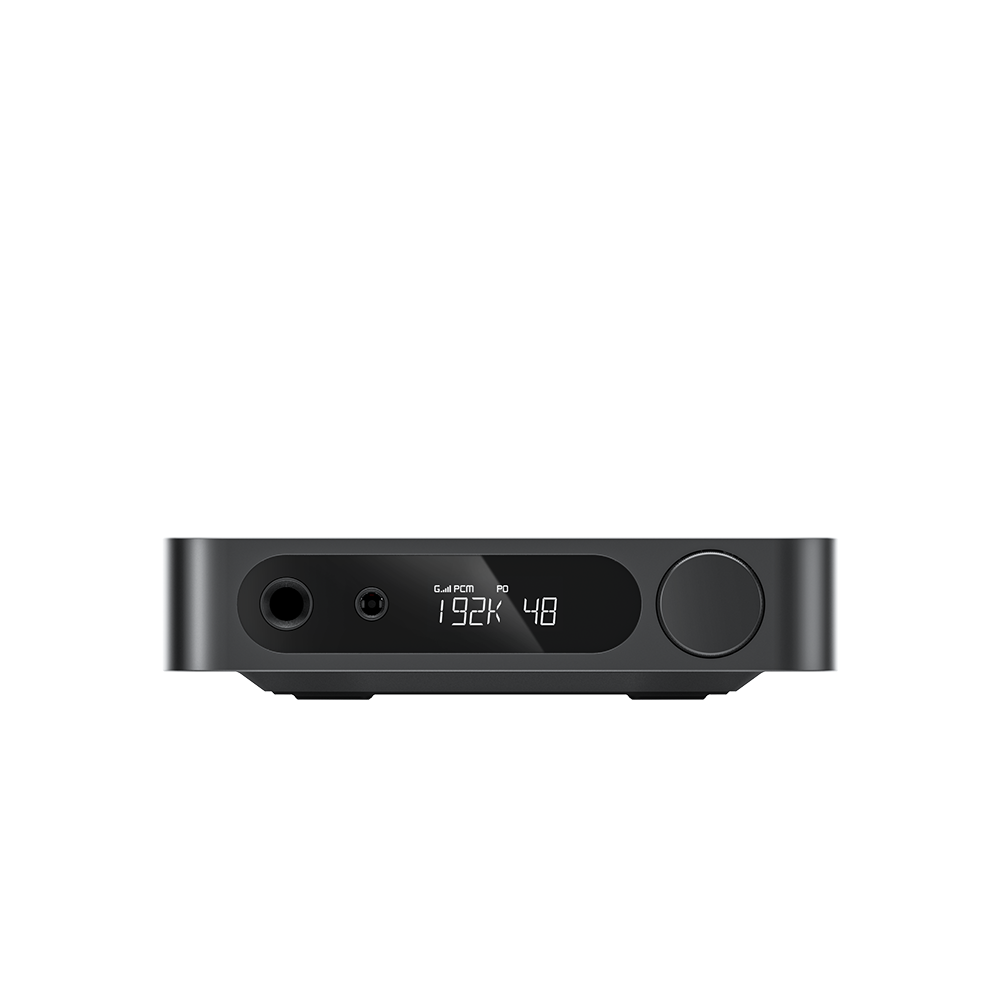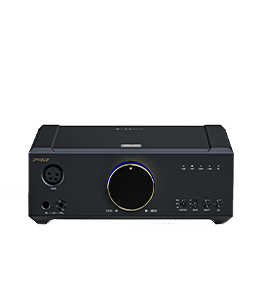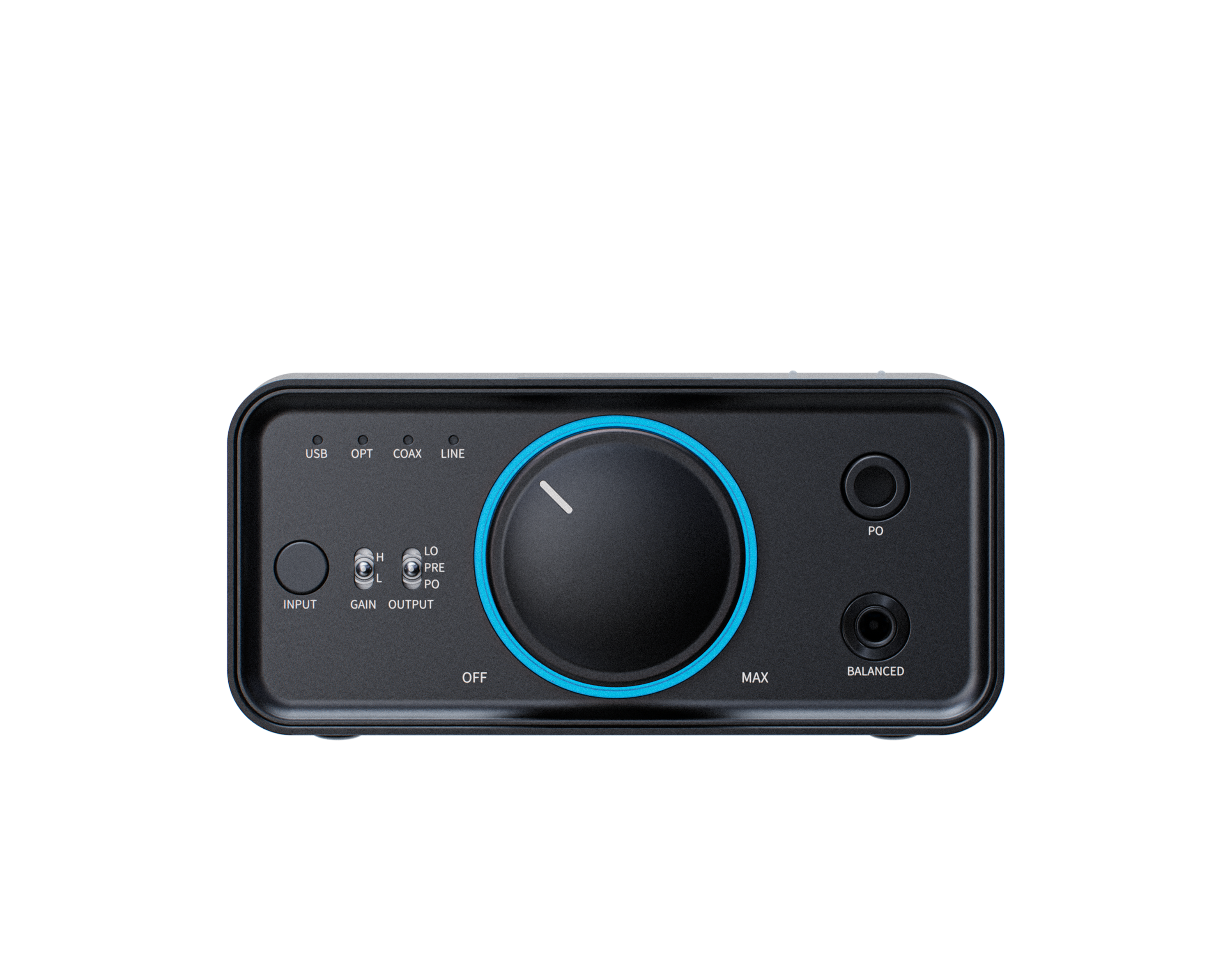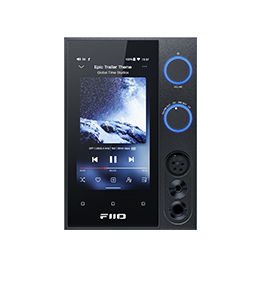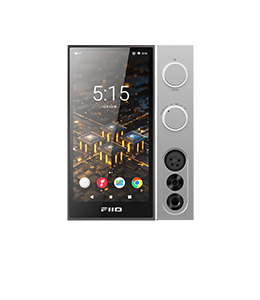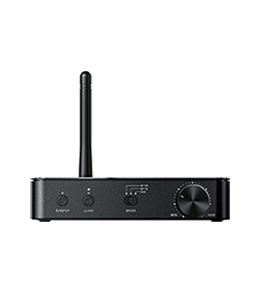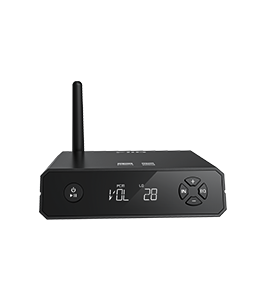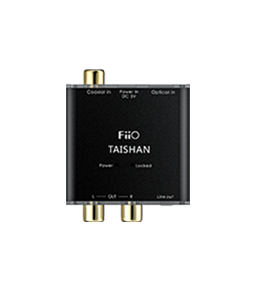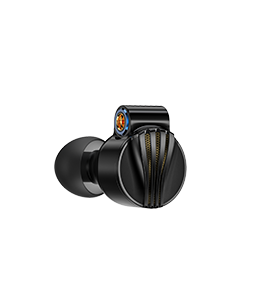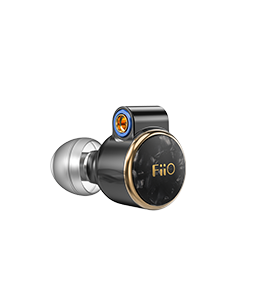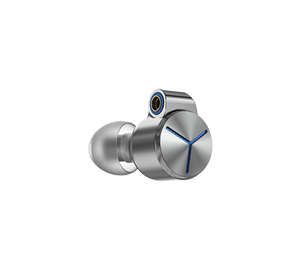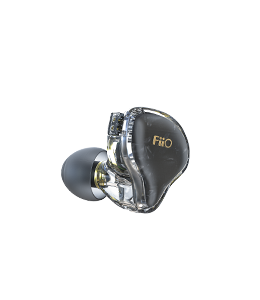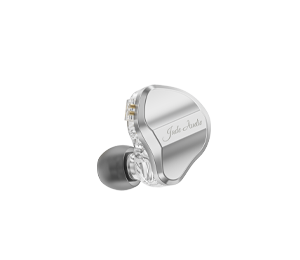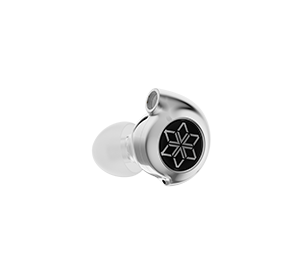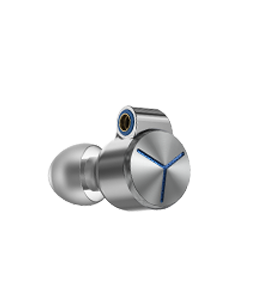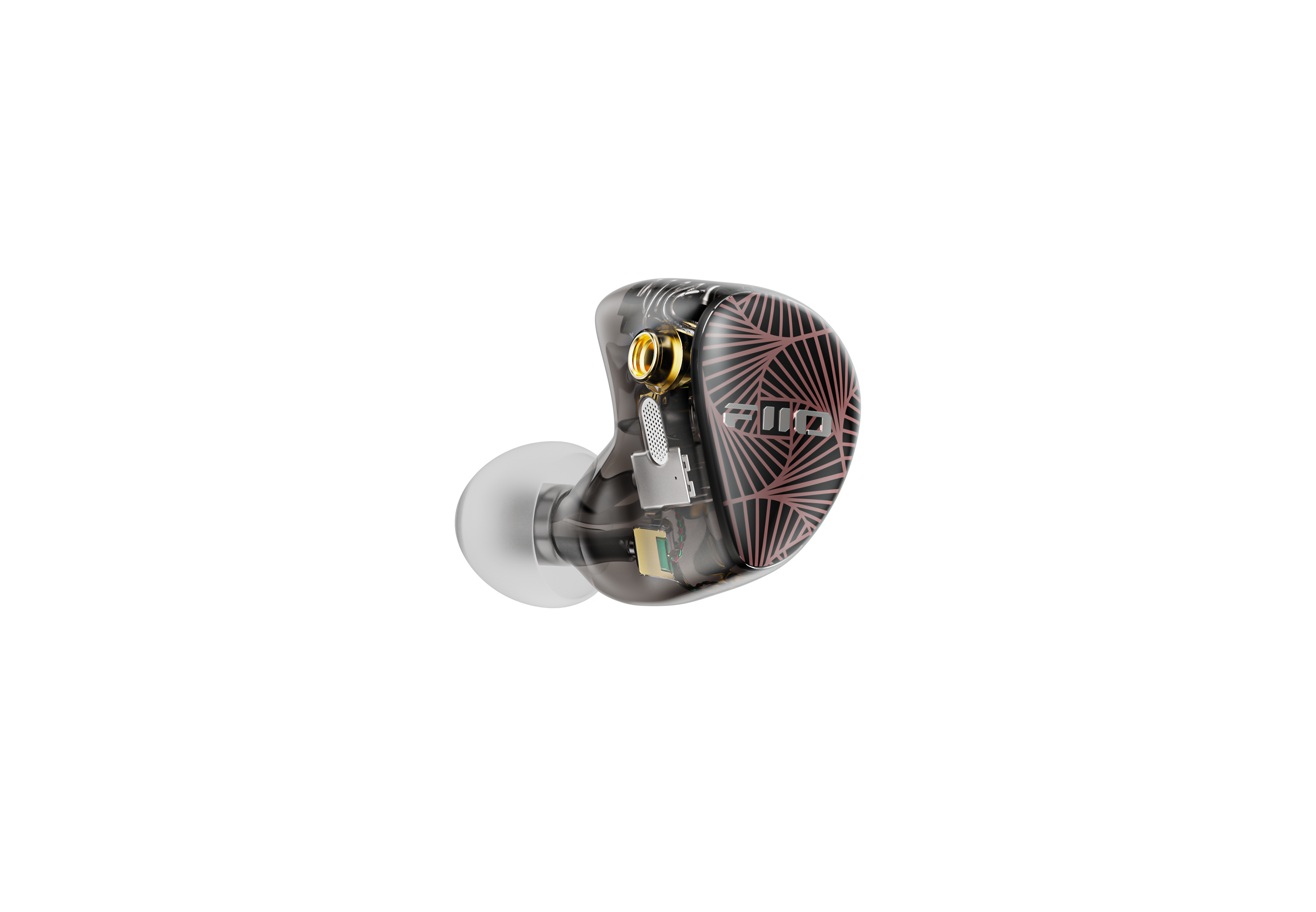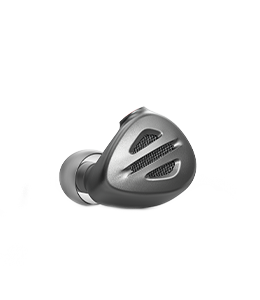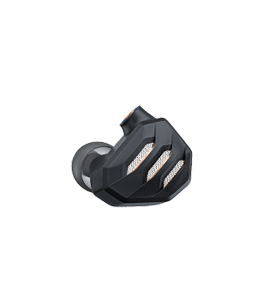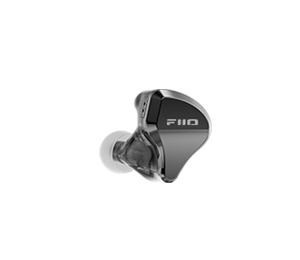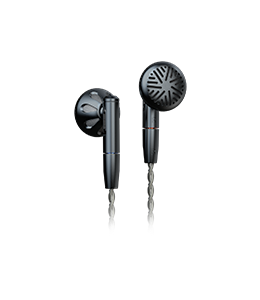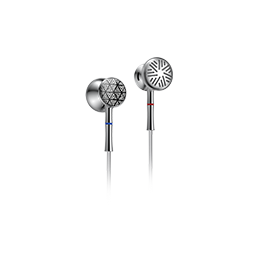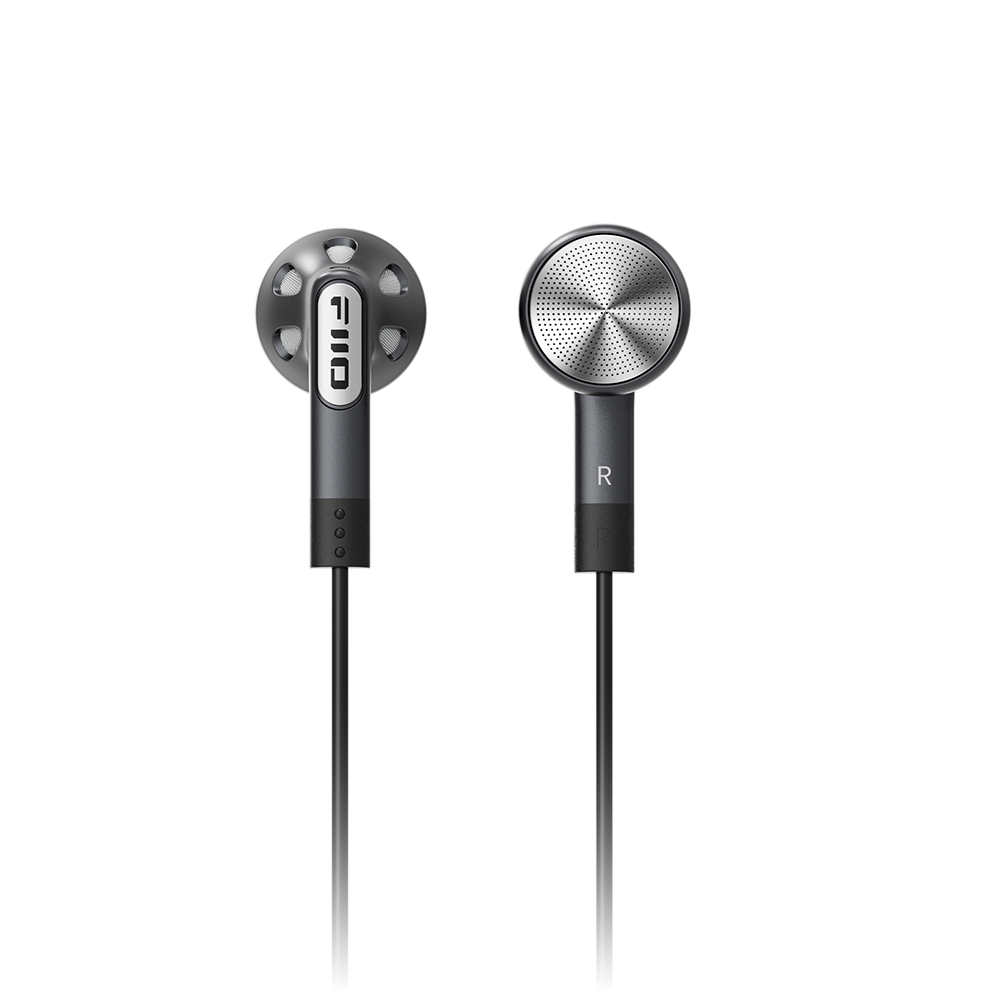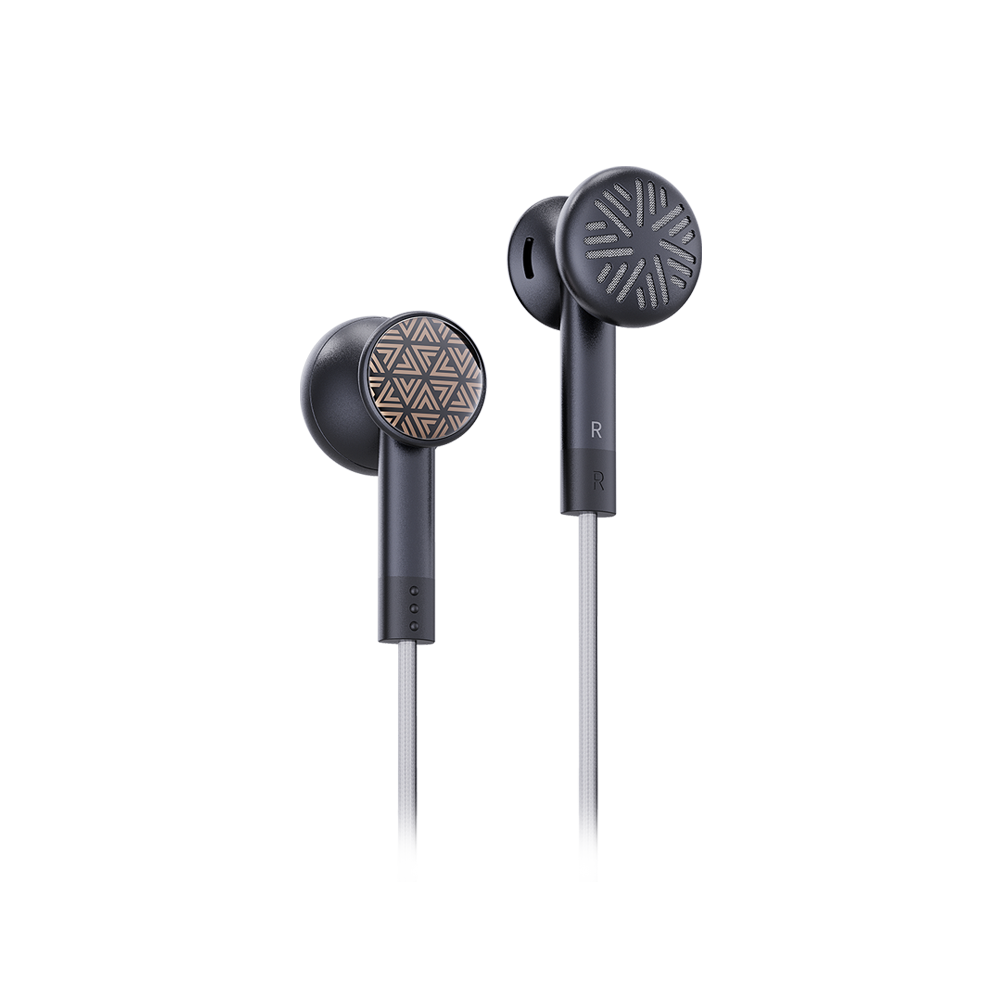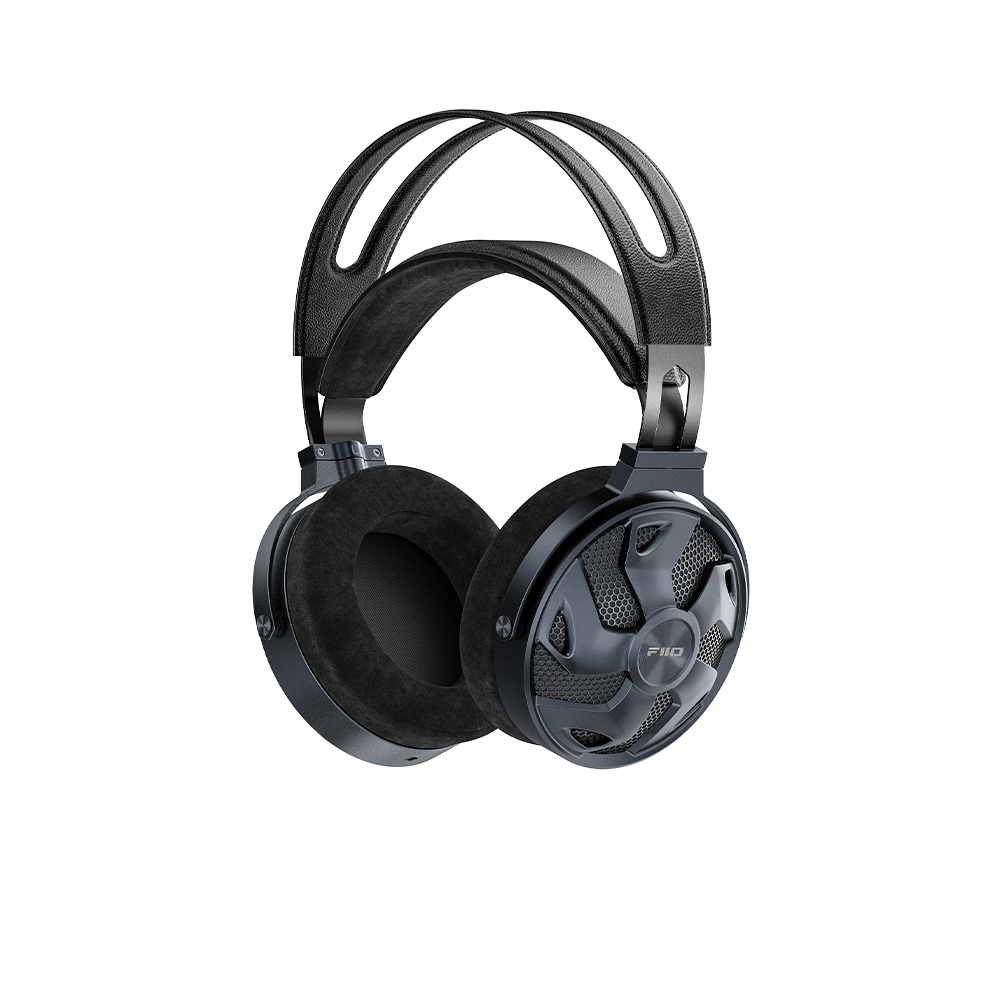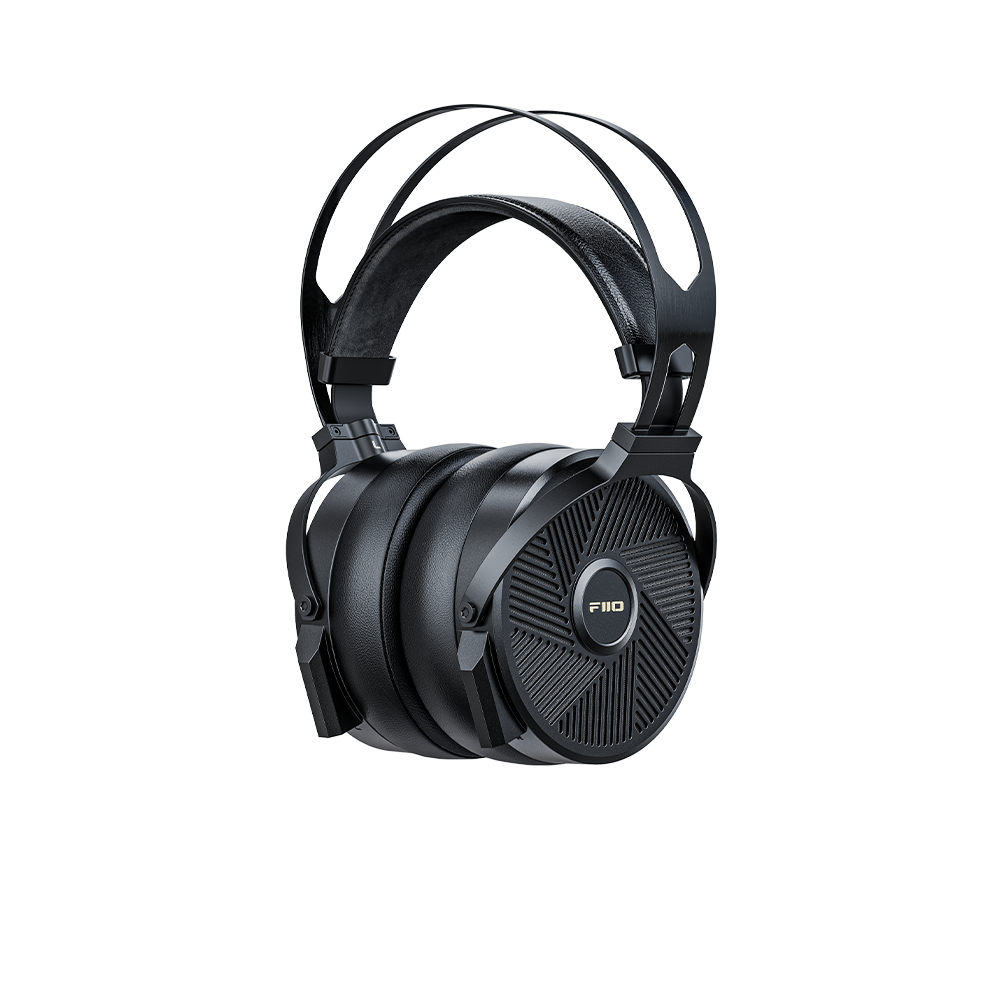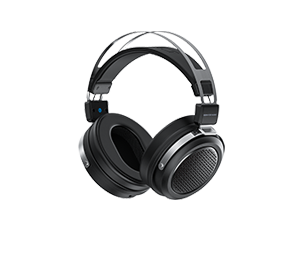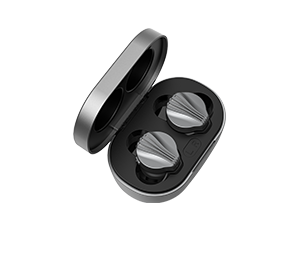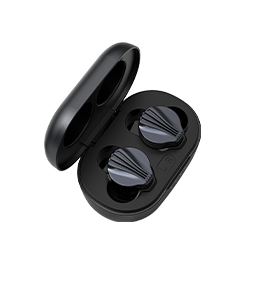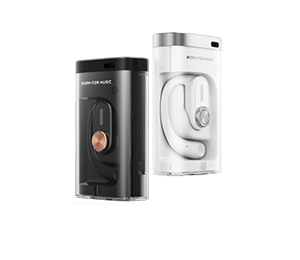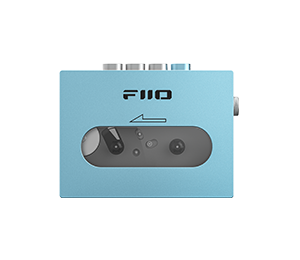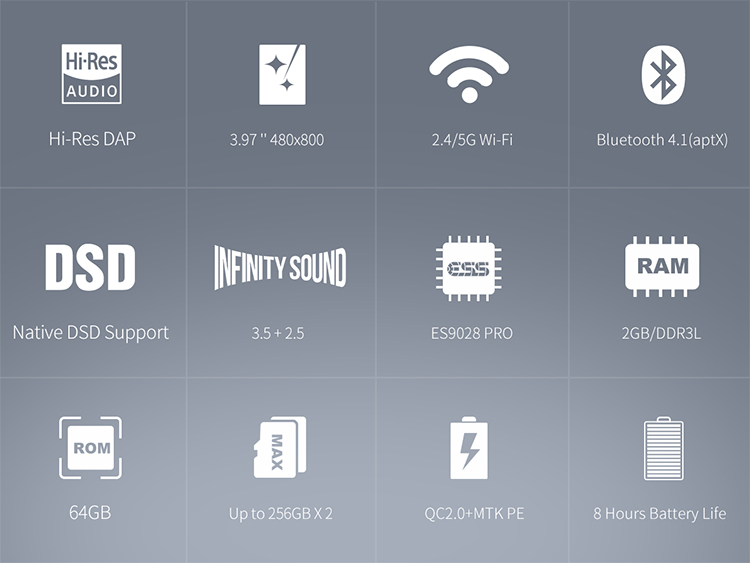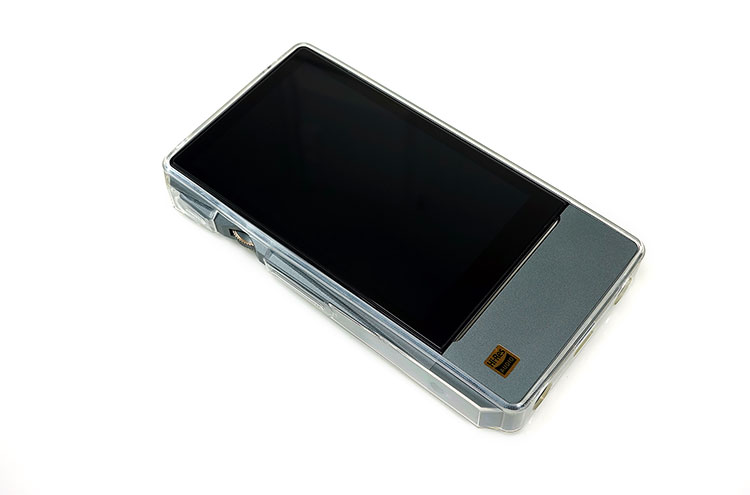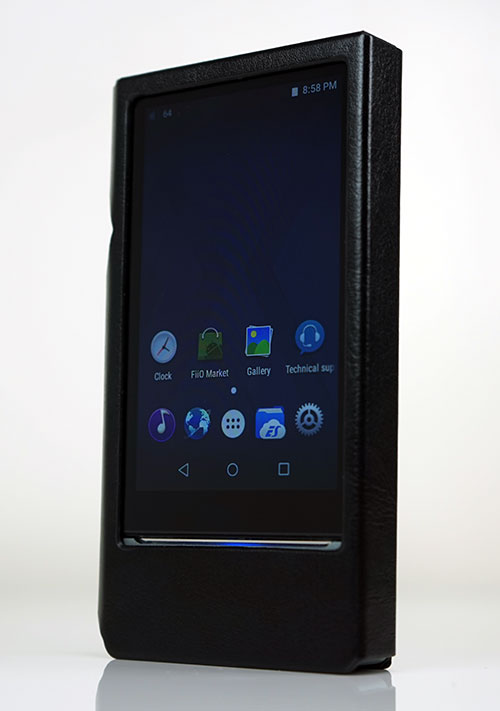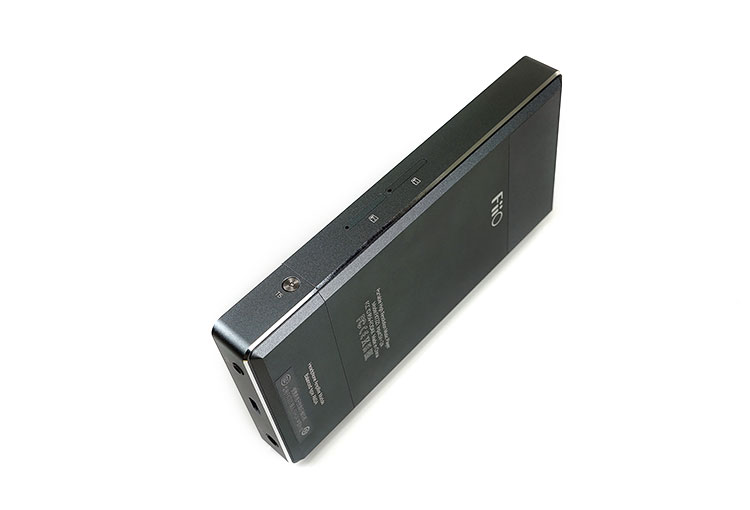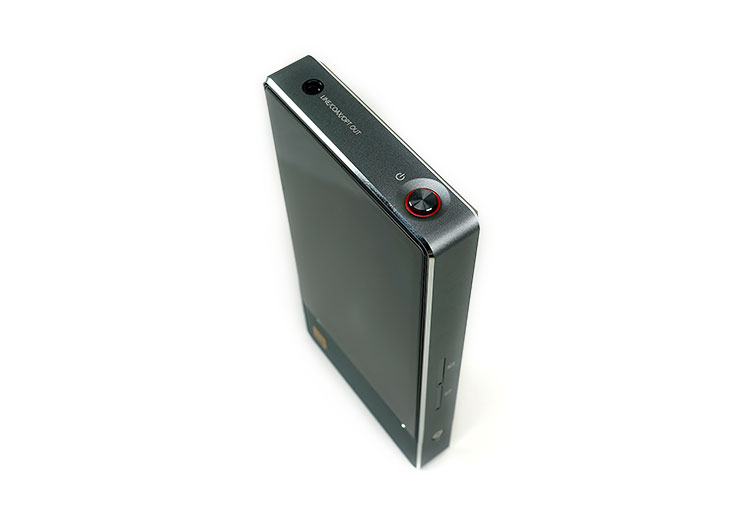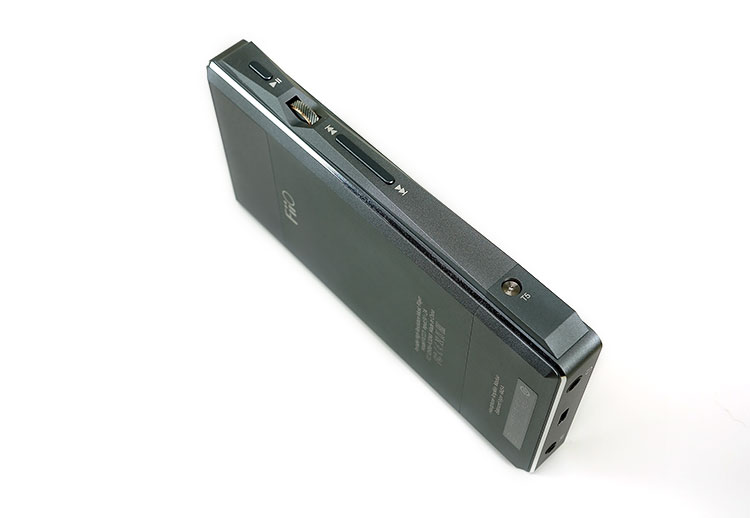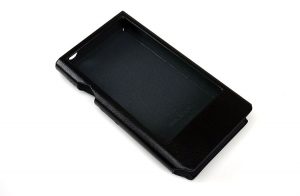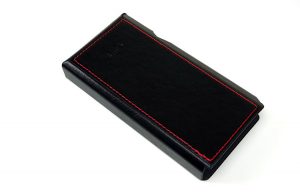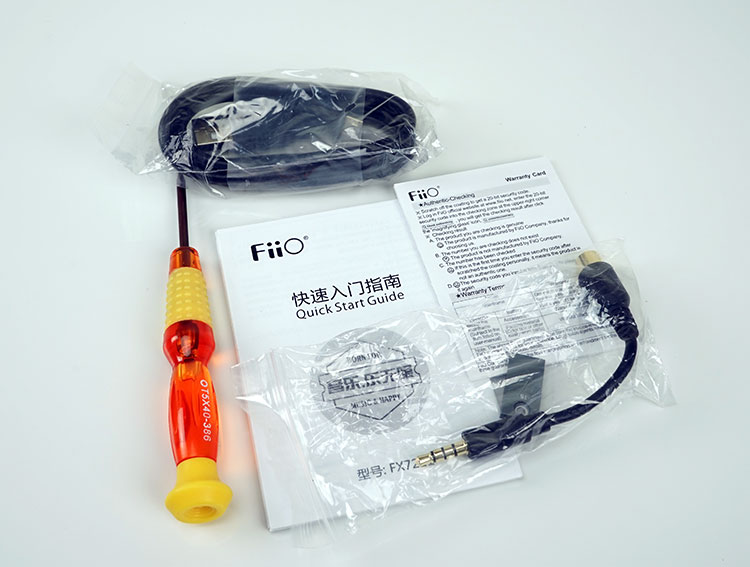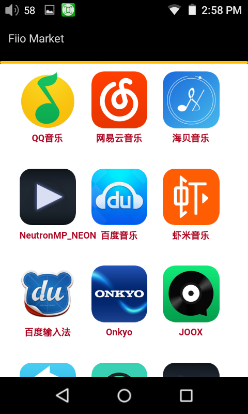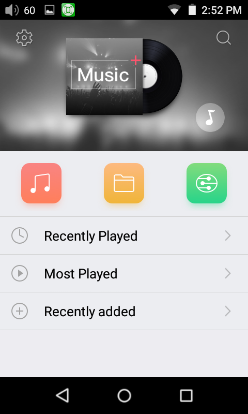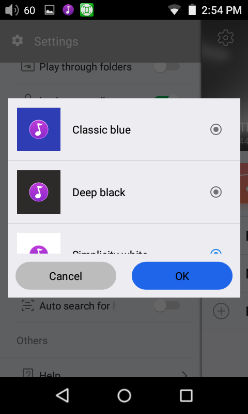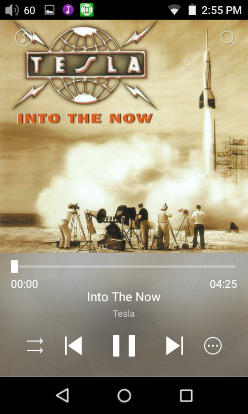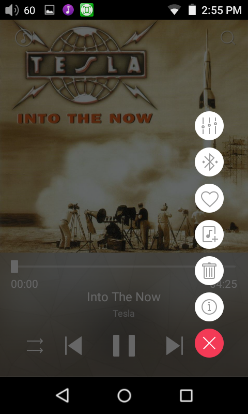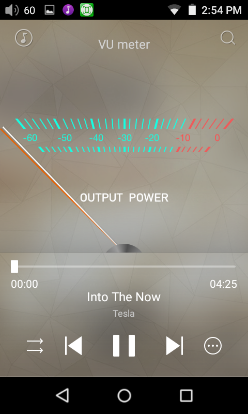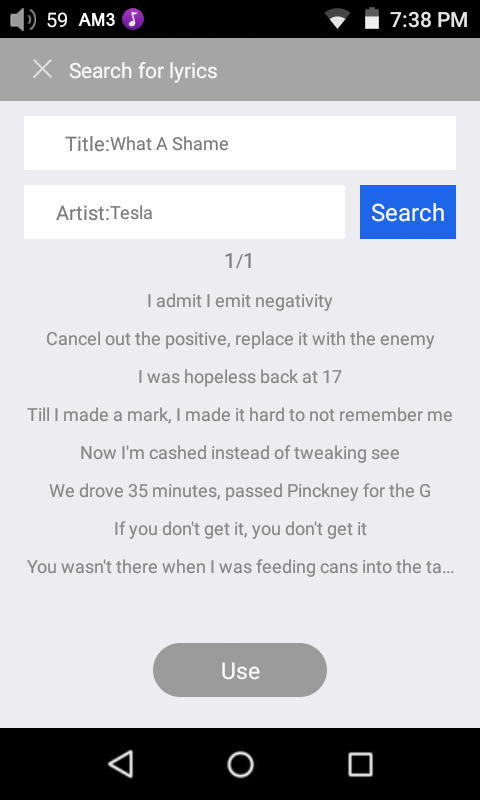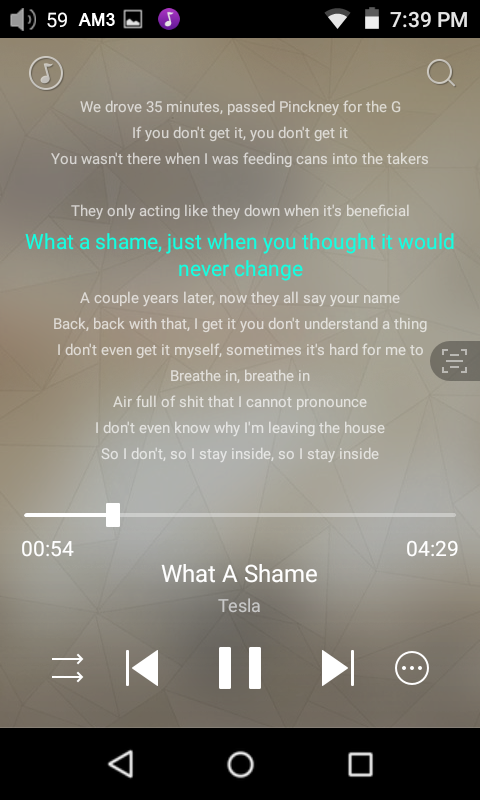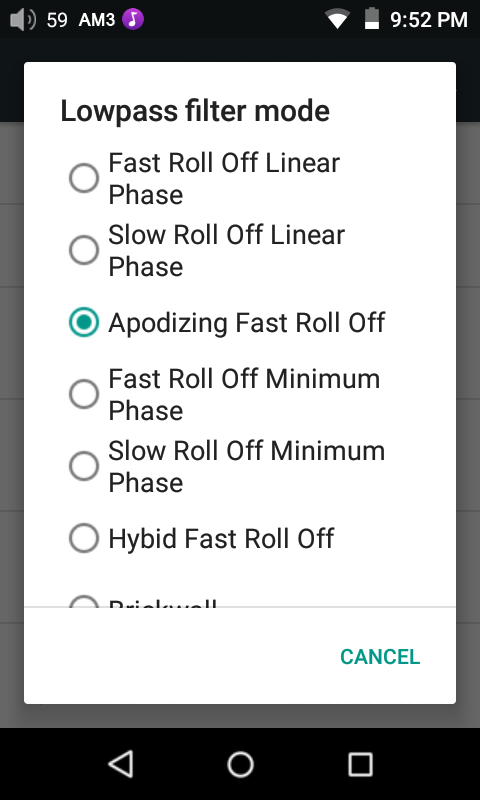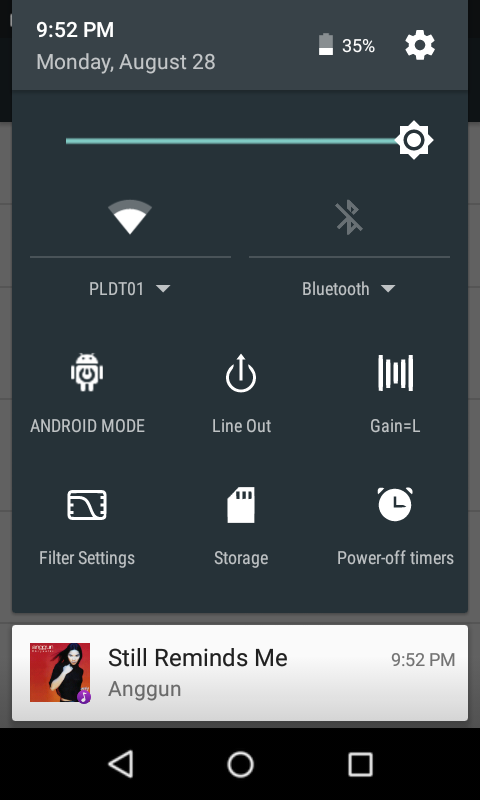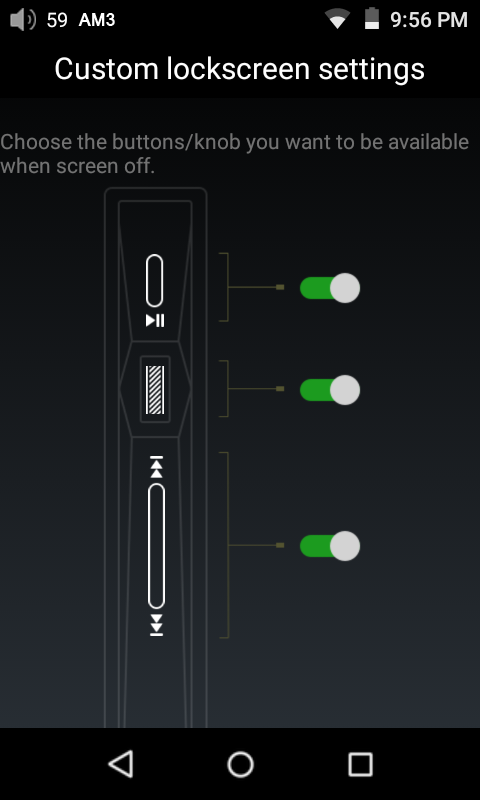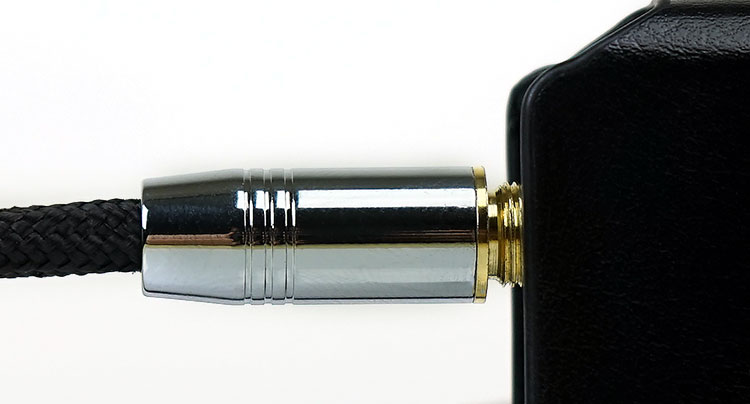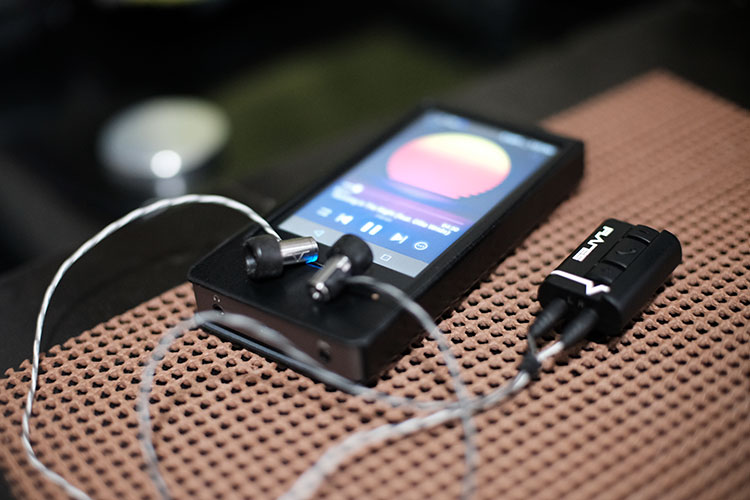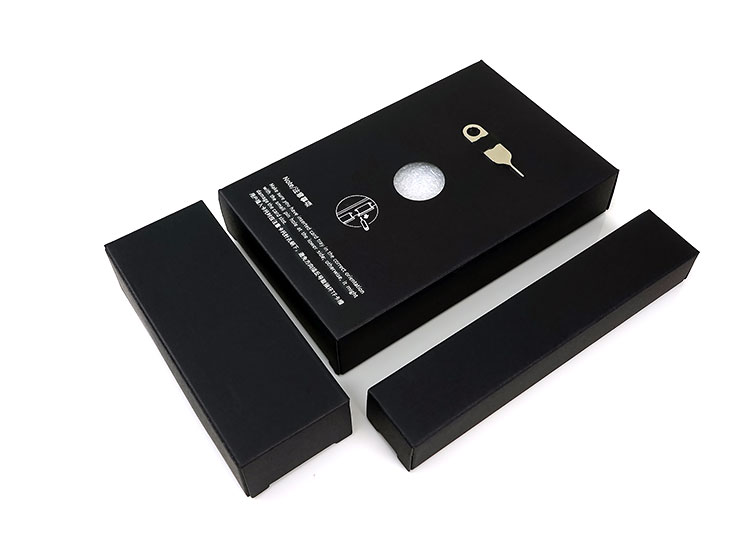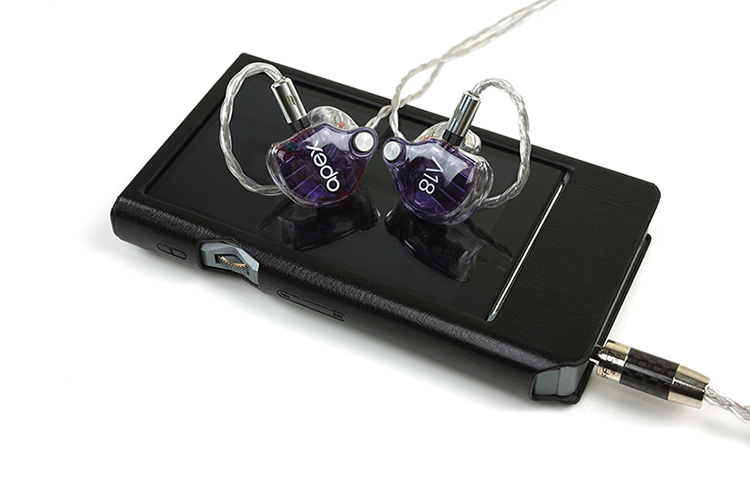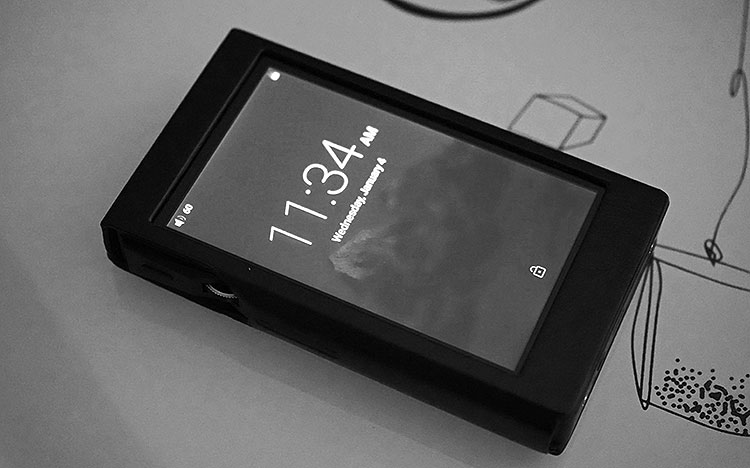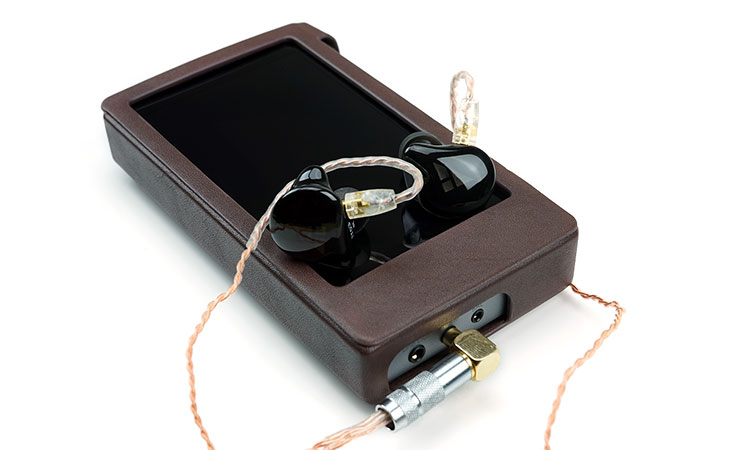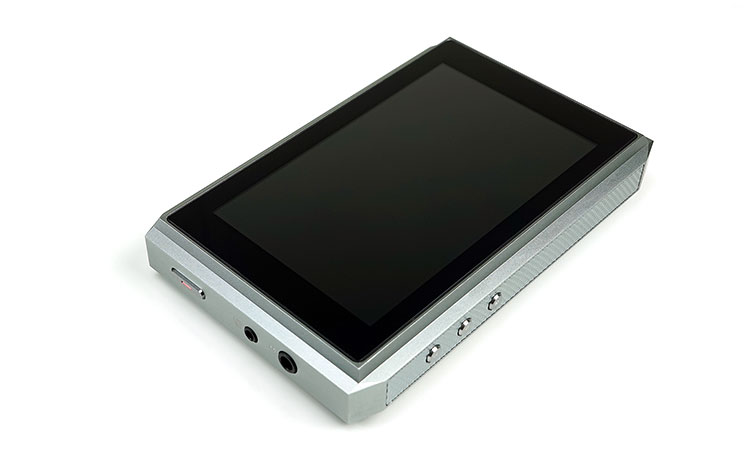THE X7 MARK II BY FIIO
Author:Marcus
Review from:Headfonics
→→ Read the original article on Headfonics:>> Click here
Given the rapid development of DAPs in the last 2 years, it is totally unsurprising to see FiiO launch a revised edition of their original and very successful X7 flagship DAP which launched in late 2015. FiiO has always been consistent in a product life cycle of around 18 months and the TOTL DAP cycle seems to be no different.
FiiO also has a habit of dovetailing their products with a defined vision and very often they lead to the market with a new product feature, that if successful, find themselves integrating into succeeding products.
It is not simply a trickle down effect either. The $649.99 X7 Mark II draws a little from its little sibling, the X5 Mark 3, both in terms of firmware and design concepts. Some of what you see on the X7 Mark 2 has been refined from earlier X5 Mark 3 customer feedback.
It is also one of the lead products for FiiO’s Infinity sound marketing campaign that has seen it launched simultaneously with other co-branded FiiO gear including the X3 Mark 3, F9 and Q1 Mark 2. Whether or not the Infinity sound concept will take hold or not it is too early to tell but clearly, the X7 Mark 2 is the big ticket item and as such should have all the best “goodies” under the hood.
What Is The Pitch?
New DAC
There are a ton of unique selling points on the new X7 Mark II but a few strong pitches stand out for me to lead off with. The first and foremost is the new DAC chip set that now seems to be the standard setter for high-end DAPs, the ES9028PRO.
I am a big fan of this chip set thus far in the implementations I have heard to date, be it the DX200 or the Oppo Sonica’s slightly higher end ES9038PRO. Though the X7 Mark 2 only deploys a single chip implementation unlike the dual DX200 design, the performance figures and tonal change up from the ES9018 chipset should provide a vastly superior though still neutral sound and one fixed on delivering plenty of detail. Worried about treble glare, an often remarked tonal quality of the ES9018, then the Es9028PRo so far has been the antidote to those concerns.
The fact that the material cost of the ES9028PRO is considerably higher than the ES9018 yet the older FiiO X7 price point has been largely retained be considered a very positive plus point.
New Amp
The X7 Mark 2 also comes shipped with a brand new amp module, the AM3A, which is a single ended and balanced output amp card in keeping with FiiO’s Infinity Sound pitch.
The AM3A features an Analog Devices AD8620 opamp implemented to provide a higher level of performance than the older AM3, particularly with sensitive IEMs. If you remember the AM3 had a slightly high noise floor, this new card drops the output power a little in favor of a much and more attractive lower noise floor for IEM users.
Modern Shape
Gone are the more sedate straight lines of the older X7 and in comes the new left panel accented rotary volume dial design of the X5 Mark 3. This now harmonizes the design cues between both DAP lines as well as offering a more tactile and easier to use volume control experience that brings it up to speed with today’s typical competing DAP designs.
FiiO also claims it should be a little easier to use than before with a slightly lighter weight and a little height and thickness taken off the Mark II.
Enhancements
Everything else is being pitched as being faster and easier to use (streamlined OS plus 2GB RAM), easier to connect to the outside world (improved WiFi and BT support), more output functionality (additional optical output), and capable of storing a lot more music and files than the previous model (dual memory slots).
Build
Form Factor
The X7 Mark II uses the same titanium colored CNC Machined aluminum alloy as its predecessor, however, the final design has been given a more modern finger and case friendly makeover.
Handling
It may not seem a huge change but once in your hand, you will notice the smoother handling of the X7 Mark II over the Mark 1. A big contributing factor is the reworking of the volume buttons into a 45-degree etched line rotary dial on a more modern accented left control panel.
With all the buttons on the left panel, there is now also less stretching and manipulation to use the playback controls on the Mark 2. Combined with a rounded redesigned leather case you get a softer level of pressure in your hand as well as a device that is generally much easier to operate.
Left Panel
The left panel is also a harmonized design originally show cased with the FiiO X5 Mark 3 and represents a more modern approach consistent with competing DAP designs in today’s market. The only major difference in how they are implemented is the final part of the wedge design over the amp card which is actually a separate piece screwed in. This allows you to use the older amp cards with their older shape without affecting the form factor. You simply take off the wedge and screw it back on again over the amp card of your choice.
Dimensions & Weight
The X7 mark II is still more or less a candy bar design though this time we lose 1.2mm in length and 1mm in thickness as well as 10g in weight. What the marketing material does not say is the additional girth over the older X7 with that new left panel design. The X7 mark 2 may be shorter and thinner but it is wider by some 3.2mm. In terms of preference, I trade height for width since in the hand the X7 Mark II feels more balanced than the older longer X7.
| Height | Width | Depth | Weight | |
|---|---|---|---|---|
| HiBy R6 SS | 116mm | 66mm | 15mm | 275g |
| HiBy R6 Al | 116mm | 66mm | 15mm | 190g |
| FiiO X7 Mark II | 128.7mm | 67.2mm | 15.5mm | 210g |
| FiiO X7 Mark 1 | 130mm | 64mm | 16.6mm | 220g |
| iBasso DX200 | 128.5mm | 69mm | 19.5mm | 240g |
| Opus#3 | 117mm | 74mm | 18mm | 220g |
The Mark 2 is not the shortest of the competing DAPs, that award goes to the Opus#3 but it is certainly not as fat or as heavy. In fact, out of the selected DAPs, the X7 Mark II was the lightest and thinnest DAP tested. The numbers may seem marginal on a ruler but in the hand, they make a huge difference.
Back Panel
This is the other major design change and a most welcome one also and that is replacing the raised back panel with a flatter version. Though not a huge factor in the operation functionality it does improve the visual aesthetics immensely as well as increase the fit and grip from the included leather case. Much of that reduction in height being pitched in FiiO comes primarily from flattening the back panel.
Screen
Performance
On paper, FiiO has deployed the same screen specs from the gen I X7, a 480 x 800 pixel 3.97″ IPS TFT screen capable of 16.7m colors and a 233ppi pixel density resolution.
In reality, the performance of the screen on the Mark II is much superior with better color saturation and more pop so they have definitely changed to a better performing version than the previous Mark I LCD screen.
It is not quite on the same level as the brilliant DX200 screen which is a bit bigger at 4.2″ IPS Screen and a slightly higher resolution of 768 x 1280 but a bigger screen would have meant a much bigger body which may not have suited FiiO’s harmony design philosophy.
Flush & Bezel changes
If you also look carefully the screen is now more flush with the chassis compared to the older raised screen of X7 Mark 1 and the bezel design has changed a little also. This is primarily due to the slightly squatter form factor with a thinner top bezel and slightly thicker bottom and side bezels.
FiiO has also moved the “FiiO” white moniker off the bottom bezel border to the back plate. I suspect moving it creates less distraction when watching movies and media given its all white appearance.
There is still no integrated navigation in the bottom bezel, something smartphone makers are really going to town on. It would have been fascinating to see a borderless X7 screen design, perhaps Gen 3?
Blue LED Lights
You still have the very funky LED light system on the Mark 2 just below the screen which will show a pulsing blue light for power on and charging. The option to customize the light to solid or pulse remains in the display settings should you wish to differentiate.
Memory Capacity
The X7 Mark II not only draws from the X5 Mark 3’s form factor but also its memory card function and capacity. Instead of one open slot on the left side of the old X7, the Mark II now sports 2 sim slot style trays that can hold up to 512GB in total (256GB x 2).
On top of that, the internal memory gets a boost from 32Gb to 64GB. The switch to these sim tray style slots is similar in styling to the X5 with a 0.2mm gap but you do need to keep a pin or the key card handy if you want to open it up and change cards.
Battery Life
Battery size has increased from a 3500mAh to 3800mAh on the X7 Mark 2. FiiO has rated the X7 Mark 2 capable of delivering 8 hours battery life in single ended mode and 7 hours in balanced output though in truth this relates more to the performance of the new AM3a amp card as opposed to just the X7 itself.
Amp Card Influence
Previous amp cards all have an effect on the output rating and battery performance of the X7 system. You can get as low as 6 hours with the balanced output of the slightly more powerful AM3 card on the older X7 and as high as 9-10 hours on the weakest output card, the AM1.
The AM3a, therefore, sits second from bottom in terms of battery life but its performance is not inconsistent with its output ratings. Much of the additional battery life of the Mark 2 is likely to be used for the additional oscillators, RAM and CPU demands.
Rapid Charging
One thing to note with the Mark 2 battery management is that it supports the same rapid 9/12v charging system on top of the regular USB BC1.2 design found in the X5iii. This means you can charge your X7 Mark II in about 1.5 hours rather than the more standard 2.5 hours. The new battery config allows both this and temperature management when opting to rapid charge and tells you all of this on the screen during those 1.5 hours.
Physical Controls
Inputs & Outputs
Optical Output
There have been a few notable changes and additional features to the Mark II I/O’s over the first generation design. The big new feature is the addition of an optical output to the jack on the top plate. This is a ‘do it all’ jack now for both analog and digital line outs with both line and coaxial from the previous design still being retained. Those who own a Hugo, Mojo or even a lower end iBasso D14’s can now use the X7 Mark II’s optical output as well as the USB OTG and coaxial features.
Micro USB
One thing that did surprise me was the retention of the micro USB slot for charging, DAC and OTG purposes. Since quite a number of releases in the last 12 months have gone to USB-C I was half expecting the new X7 to go in the same direction. Sure micro USB is still quite prevalent and connection options are as easy today as they were 18 months ago but I get a feeling this maybe less future proofed than before. Time will tell.
Power button
FiiO has also moved the power button away from the left panel to the top panel and drawn again from the X5iii design though it omits any LED given it already uses the LED strip on the front panel. I actually much prefer the position of the power/Screen button on the new X7 over the X5iii. It stays out of the way a bit more whereas the X5iii position tended to conflict a little with the play pause button on the opposite side. Too many times I have hit the play pause button with pressure when attempting to press the X5iii power button so the new position is ideal.
Playback Controls
Playback controls are now all housed in the left panels wedge panel design with a rotary dial replacing the older volume rocker of the X7 Mark I. This is the exact same design and layout of the X5iii with slimmer playback rocker below the rotary dial and the play pause button just above.
Personally, I am a big fan of the new playback control system and it felt right on the X5iii. Everything feels more tactile now with the buttons a little more raised and the volume rocker in-between and all on one panel. Controls are easier to find, faster to access and less left to right-hand manipulation in the process.
Accessories & Packaging
The X7 mark II retail box has had only a few minor changes from the original X7 box 18 months ago. It is marginally bigger and wider with a pic of the new design as well as apt-X in bold white letters on the back, something which the X7 did not have when launched 18 months ago.
New Cases
Perhaps the best part of the new accessory package is the included case. The original X7 did not have one, you had to buy it, though it was a lovely brown color. It also slid off way too easily after prolonged use.
The X7 Mark II now comes with leather case as standard and is better designed to hold the X7 Mark II in place with slots for rotary control and digital outs as well as indents for playback control. It pretty much draws from the design of the X5iii case with the red leather sticking on the back.
This time the playback button is covered by the case and the top seam is open by design I presume to allow for the case tension surface on the left to be a bit looser for accurate button mashing.
Everything else is relatively similar to the older X7 accessory kit with a screwdriver for amp card swapping, USB-A to micro-USB charging cable, coaxial adapter, warranty and quick start guide. Note though the screwdriver is much bigger and easier to use than the older T5 screwdriver in the X7 Mark 1 package. I dare say a few of those tiny T5 versions have been lost over time.
Page 2: Hardware, Software Performance & Features
Hardware
DAC
For my money, the ES9028PRO DAC implementation in the X7 Mark II is a fairly substantial upgrade on the older ES9018s desktop chip in the first gen. Distortion is generally much lower and dynamic range including resolution has been better in other implementations of this chip I have heard thus far.
Tonally it is in keeping with the X7 character with a neutral and very detailed presentation and whilst I will go into this in more detail in the sound section you can expect much less chatter about the old Sabre treble glare.
I wish it was dual channel but the price point suggests a compromise was made given the dual ES9028PRO DX200 retails for almost $200 more. Nevertheless, the ES9028DAC is a class performer in terms of refinement and capability and way ahead of the dual AK4990 implementation in the X5iii.
In terms of decoding capability, the X7 Mark II will handle DSD, DXD, PCM hi-res up to 384kHz/32BIT and Wav up to 384kHz/64bit. Flac down to MP3 pose no issues either and Apple music users are catered for with ALAC decoding capability.
Triple Oscillator Design
One big differentiation with the X7 Mark 2 is the use of a triple oscillator design compared to the X5iii’s and X7’s dual oscillator implementation. The X5iii and X7 jitter control were split between its two oscillators for DSD and PCM sampling rate conversion. The X7 Mark 2 now splits this 3 ways for faster conversion of DSD and 44.1K sampling, 48k multiples sampling, and 384kHz sampling.
SOC
FiiO has retained the Rockchip RK3188 quad-core CPU for the X7 Mark II which might seem like a bit of cost cutting given it was originally used to drive KitKat 4.4 18 months ago on the X7 but they have at least offset that by adding 2GB of RAM over the previous 1GB of RAM.
The Rockchip RK3188 is a fairly fast ARM SoC primarily designed for tablets so a smaller touchscreen DAP such as the X7 Mark II will present no GUI or 3rd party app issues. Though it has been out since as early as 2014 benchmarks put this chip set around the 14,000- to 18,000-point mark in AnTuTu and slightly superior to the well respected Tegra 3.
Considering the Android platform is 5.1 and not 7.0 2GB plus the RK3188 should represent a faster processing and performance experience over the older Mark 1, particularly for apps management or multitasking.
Amp Card
AM3a is the new kid on the block and the 6th amp card to be released by FiiO for the X7 system. It operates entirely in the same manner as previous modules and its design and build is also the exact same though this time the color match between its finish and the main body finish is much better. The older modules, apart from the AM1 where all a much darker color so you did need a case to hide that lack of aesthetic uniformity.
Less Power
The AM3 is a modified version of the older AM3 which is perhaps my favorite card in terms of performance and value out of the entire range. The key characteristic of the AM3 is that it retains both single and balanced outputs of the older AM3 but drops the output power ratings a little for smaller loads which is good news for IEM users.
Numbers
The AM3 numbers under a 16ohm/1kHz load had a rating of 250mW in single ended and 420mW for its balanced output. Compare this now to the AM3a which outputs at a lower 200mW and 380mW under the same load conditions and you can see what FiiO is trying to do. Noise should be much better controlled on the new AM3a.
Software
Platform
The X7 Mark II retains Android 5.1.1 which is a significant upgrade on the older KitKat which the original X7 launched with. However, 5.1.1 is the standard across all the FiiO’s DAPs as of the time of writing with the original X7 long since upgraded and the X5iii using the same platform.
FiiO has gone on record as stating that Android 5.1 has also allowed it to bypass 3rd party apps hijacking sample rate conversion that arose on 4.4’s implementation on the X7 with an altogether more stable and longer running 5.1 platform. True enough, on Smartphones, we are on Android 7 but there are few if any DAPs going beyond 5.1 in today’s market apart from the DX200.
All 3 DAPs also use the same RK3188 CPU but the key differentiation is the 2GB of RAM in the X7 Mark II which is 1Gb more than the other two. This should provide for a much snappier experience than before in terms of multitasking and general UI workflow management.
APK Compatibility
The original launch of the X7 saw a very restrictive apps white-list being implemented by FiiO and no Google Play services or store. The new X7 Mark II still has the whitelist under FiiO Market, however, the Google Play Store and Play services are now installed out of the box for the international release version. You can access both and download whatever you wish such as TIDAL, Spotify, Facebook etc.
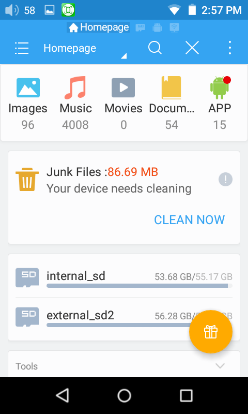
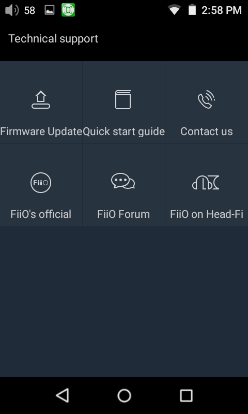
Pre-loaded apps also include the FiiO Technical support for guides and upgrading, the pics gallery app, ES Explorer for file management, a clock tool and of course FiiO’s own Pure Player app.
In many ways, the X7 Mark II is no different to any Android smartphone out there for apps compatibility but bear in mind 5.1.1 is quite old in smartphone life cycles. Give there is 2GB of RAM it is not inconceivable though that the X7 could get an upgrade to Android 6 before the end of its life cycle.
Performance Benchmarking
The X7 Mark II retains the dual boot capability of the X5iii and X7 Mark 1 so you can opt for a standard Android experience or their dedicated Pure Player OS. The Android experience is bloatware free, in fact, compared to many smartphones it is about as vanilla (plain and simple) as you can get.
What I was curious about is how it bench marked, particularly against the older X7 with just 1GB and the DX200 which is also 2GB but using Android 6.
X7 Mark I Comparison
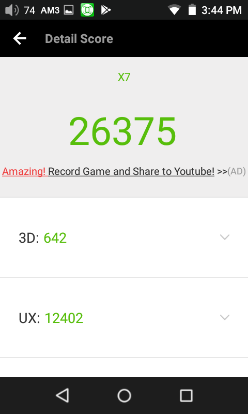
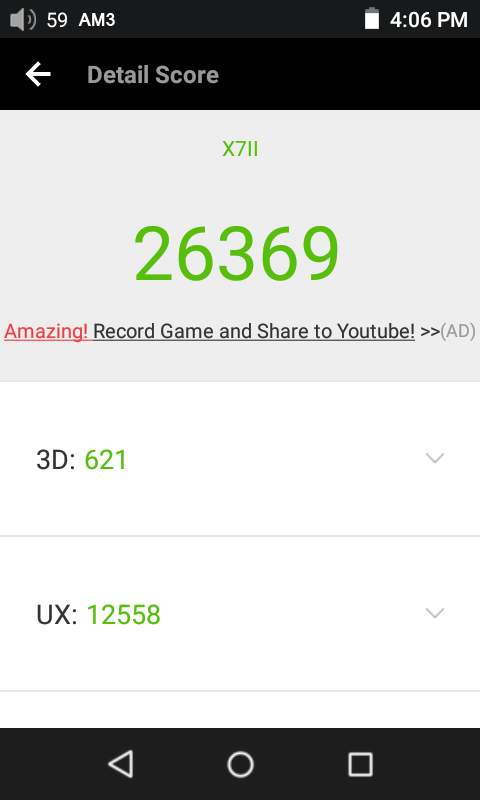
With a minimal load, the difference in performance scores was almost negligible however the Mark II did have a few extra background processes running in particular Messenger and Facebook apps so we would expect those numbers to go up a little higher with an out of the box benchmark testing and no additional apps.
The UX score was better on the X7ii backing up FiiO’s claim of an enhanced usability experience with their tweaked UI. Given the low 3D scores though the X7 Mark II is not a games machine in disguise so I would avoid loading any GPU intense applications. They will stutter and likely drain the battery very quickly.
DX200 Comparison
My previous contention was there was no need for Android 6 on the DX200 considering the lack of Google Play services and the numbers speak for themselves in that regard. Both have very similar bench marking numbers with the X7 Mark II the slightly better of the two overall particularly in UX performance and also a slim advantage in CPU performance.

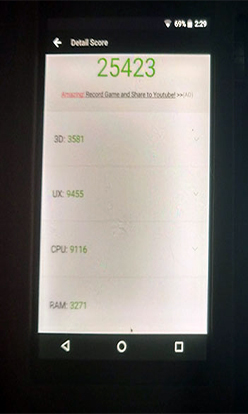
The dedicated Qualcomm MSM8996 Snapdragon 820 in the DX200 though makes it much superior to the X7 II for gaming and 3D graphics with a massive 3581 score compared to the X7 Mark II’s 628 and the X5iii’s 574. Not that I would suggest using the DX200 for gaming but anything GUI related will perform better on the DX200.
X5iii Comparison
Compared to the X5iii the X7 Mark II does show some improvement, particularly in the RAM numbers as you would expect with a score of 3001 compared to 2684 as well as 3D scores. Elsewhere the performance enhancement is more marginal than I expected but still a notch up. It is likely the shared RK3188 chip is the common denominator in these relatively similar results.


Note test conditions where with minimal app loading, the X5iii did drop to below 20k bench mark score with a few apps loaded whereas the X7 Mark II stayed well above 20k so that is where the value add in the X7 Mark II additional RAM comes into play.
UI Changes
Whilst the workflow and structure of the X7 Mark II UI remains largely the same from the original X7 and FiiO X5iii there have been a number of tweaks in improving the experience plus one or two additional features.
For a more in-depth discovery of the basic workflow and options of the Pure Player system, you can read page 2 of our X5iii review here.
For a primer on the original X7 Mark I launch firmware and features, you can read page 2 of our X7 review here.
Pure Player Home Screen
The Pure Player home screen has had a slight upgrade with its 3 central icons which are now redesigned to look more like typical app icon squares. The icon action drawings are more simplistic and understandable in what they do.
Theme Control
Whilst the original X7 always had theme control its application within Pure Player was somewhat clunky. Originally, when the side drawer menu was activated, you simply clicked on the theme option and the pure player automatically booted into one of two themes. You had no control over which theme you want as the whole experience was quite linear in its application.
In the new UI, you have an additional workflow step from the Theme menu option which pulls up a sub-menu allowing you to browse all possible themes and choose which one you want before the app reboots. Much friendlier. I am also informed that FiiO will be working on adding more themes to the app and Pure OS in future firmware.
Playback Screen Redesign
Much of the reworking has been around the playback screen and in truth, it now looks a lot tidier than the original Pure Player app display. The artwork dimensions have remained unchanged however both titles of the track and artist information is now taken away from just above the time line to just below where the various ‘in play’ options used to be.
The in play options, such as EQ, BT, favorites are now bundled into the pop-up short-cut menu which in turn has been move down to the bottom right of the screen where the favorites icon once was.
The play/pause option has lost its icon circle giving it more space to fit neatly between the forward and backward arrows at the bottom of the screen. You can still drop out of the playback screen or search for songs during playback from the top two left and right icons as before.
A few tiny aesthetically changes. Right at the bottom is the little white line between the Android controls and the Pure Player screen has now gone giving the entire screen a more integrated look than before.
The final one is the addition of a new VU Meter theme which is currently not available on the older X7 firmware and X5iii. It is more consistent with retro receiver desktop hardware interfaces from the 80’s than the older 60/70’s VU meter arc design.
Automatic Lyric & Cover Detection
Another feature ported from the latest X7 firmware and the X5iii which I really like is the ability of the latest Pure Player OS to connect, find and automatically download lyrics to any song you are playing as well as cover art if not already present. You can also control sync timing with the lyrics as well as delete them along with the cover art. At the moment though the ability to find songs is good but not perfect.
For instance, a really obvious one like a Madonna track “Hung Up” will present no issues to FiiO’s connected database. However, something a little more obscure, such as Tesla’s Into the Now album which had lyrics for “What a shame” but not the title track of the album “Into The Now”. Much of these could be influenced by how you tag your songs also. Inaccurate tagging may mean no search returns.
General Settings
Notifications Bar changes
A few features have been swapped or left out of the notifications drop down bar in Android mode.
Digital Filters
In comes a digital filters quick setting which allows you to navigate to the low pass filter mode settings. This is a feature set derived from the ES9028PRO and not something you could not play with in the older ES9018S X7.
You have a total of 7 digital filters, three linear settings, one hybrid fast roll off, two minimum fast and slow roll off settings, and a “brickwall” setting. Brickwall is one that has a full transmission in the pass band, and complete attenuation in the stop band, with an abrupt transition. These are the exact same filters found on the DX200 which also uses the ES9028PRO chip.
No Accelerometer short cut
What has gone is the quick accelerator access because FiiO has actually taken out as a feature on the new X7 mark 2. I can only presume customer feedback and general usage scenarios of the X7 including button positions made it a largely redundant feature.
Core Setting Changes
From the general settings menu, there are two changes that I can detect from the X7 Mark 1 firmware.
Adaptive Brightness
The first is the removal of the Adaptive Brightness option in the display settings which corrected the level of light on the screen in relation to the surrounding light automatically. The X7 Mark II brightness levels are now entirely manually operated from either the notifications bar or the display settings menu.
Key-Lock Settings
The second change is the removal of the button mapping options and replaced instead with a key-lock settings option that lets you customize which keys to automatically lock when the screen is turned off.
This is an excellent new addition and something I will be using quite a lot on my travels. The available keys you can lock include the volume rotary dial and playback buttons above and below the dial. It does not cover the power button itself, obviously.
Page 2: Sound Quality & Comparisons
Sound Impressions
Tonality
FiiO’s implementation of the AM3a combined with the ES9028PRO is more neutral and refined sounding than the ES9018/AM3 combination. I also find it more linear and coherent sounding than the X7/AM3 combination which tended to warm things up a little, particularly in the lower mids.
The AM3a card does a remarkably good job painting a very low noise level with only the faintest of hiss on super-efficient IEMs such as the Andromeda. In comparison, the AM3 is much noisier with a palatable level of background hiss using similar IEMs.
Those of you retaining the AM1 as the most efficient of amp cards with the least amount of noise now have an alternative that not only clamps down on the higher noise floors of the AM2, 3 and 5 but also introduces a markedly more engaging tonality as well as a balanced output should it be required.
Bass
With the AM3 you can detect just a tiny bit of mid-bass bloom whereas the AM3a is more linear and cleaner sounding in its mid-bass performance.
You might perceive the AM3 to have a slightly fuller sound but it is not as dynamic or snappy sounding with the X7II presenting more separation and textured detail, particularly in its sub to mid-bass response which you tend to miss slightly with the AM3/X7 combo.
Mids
I love the vocal performance on the AM3a which benefits from the more neutral timbre of the AM3a and the better instrumental positioning and separation this amp card can deliver.
On the AM3 lower mids are a bit thicker and smoother pushing the vocals back a bit more compared to the AM3a which takes a more linear and clearer approach and provides more space for vocals to breathe and shine.
They also sound a bit more refined, less prone to sibilance and generally more capable of delivering a more accurate portrayal of vocal embouchure techniques. The AM3 tends to deliver a smooth response but vocal characteristics and mouthing formations are not as nuanced.
Treble
Upper mids and treble on the X7II/AM3a are cleaner with a bit more sparkle. It has a lighter airier timbre and better dynamics than the X7/AM3 which sounds a little thicker but not as detailed or as articulate.
Percussive passages are more vivid and energetic sounding, perhaps a little more forward but completely avoid that Sabre glare of the older ESS chip series implementations. There is nothing harsh about the AM3a/X7 Mark II’s treble performance.
Staging
Staging wise the X7II combined with the AM3a provides better detail and dynamics at the very low end and superior air and articulation in its brilliance region. The linear response curve in the midbass to lower mids also provides a bit more space and clarity to instrumental passages.
With the additional clarity and control, you can pick up much more nuanced detail in the X7II’s mid-range imaging far quicker than the original X7 combined with the AM3 card combo.
Matchability
Efficiency
FiiO has dropped the output power of the AM3a in comparison to the AM3 by around 50mW on both single ended and balanced output. On a 16 ohm/1kHz load it now outputs at 200mW instead of 250mW which is the same power rating as the AM1. It does, however, perform significantly better on higher loads than the AM1 with a 150 mW at 32Ω rating compared to 100 mW at 32Ω and 17 mW at 300Ω compared the AM1’s weaker 10 mW at 300Ω.
What this means is the AM3a is a more flexible amp card for a wider range of IEMs and headphones than the AM1. It will provide similar very low noise levels, the one key feature of the AM1 that I rated highly but on the flip side higher rated IEMs and more demanding headphones will sound more dynamic and optimal than the AM1’s weaker output is capable off.
Power
It will not give you the same levels of power as the 300mW and 500mW AM2 and AM5 in single ended mode though if you are using the AM3a balanced output you can achieve up to 400mW of output power which will give the AM3 a clear edge over the AM2.
I would still plump for the AM5 single ended mode though for demanding headphones of 32 ohms and upwards. Both cards have a pleasing level of musicality and impact but on headphones such as the 36 ohm AKG K872 the AM5 drives this closed headphone with a bit more low-end gusto than the AM3a single ended output.
Balanced
Distinct
Balanced performance on the AM3a is much more distinct and dynamic sounding than it’s single ended output which is pleasing given the rather damp squib that was the X5iii balanced output in comparison to its unbalanced output.
Power
It is not as powerful as the DX200’s balanced, I believe 4Vrms compared to 6Vrms on the AMP 1 card, but it is a more powerful performer than the Opus#3 3Vrms balanced output. It is also much quieter than the AM3 balanced output exhibiting much less noise and background hiss.
Voltage
There is little volume adjustment to be done swapping from balanced to single ended output but you will notice the additional power that the AM3a balanced output has to offer (around 5 digital volume step difference in low gain).
It is my preferred output where possible simply due to the better dynamics and fuller sound compared to the more controlled sound of the single-ended output. IEMs such as the Fidue A91 sound a whole lot more dynamic in balanced mode with the AM3a.
Wireless Performance
Enhancements
FiiO has gone to town on pitching the dual mode BT capabilities of the new Mark II. In particular its apt-X capability out of the box combined with the superior EMI performance from the improved internal PCB shielding.
Pairing
Pairing with BT headphones and earphones was quick and painless and also informative. Both cheap (Advanced Evo X) and expensive (Flares Pro) showed up quickly and paired without any issues. Just in case you are not sure if your pairing is apt-X or not FiiO have rather handily inserted a sky blue pop-up alert that you are connected to a Qualcomm apt-X compatible device which is a nice touch.
Performance
Performance wise the X7II’s range was excellent and on par with my LG G6 as well as the DX200 with an approximate achieved range of 8-10m with one wall between the source device and me.
The Flares Pro retained a much more reliable connection than the Advanced Evo X but this is more to do with the Evo X wireless design than the X7 Mark II. It is prone to drop outs on a lot of BT sources with only smartphones getting the best out of them.
Tonally with TOTL BT IEMs such as the Flare Pro, the X7II was on par with the DX200 with excellent detail, a clean black background and little in the way of additional coloration on the Flares Pro’s own internal BT amp. That means you get a slight uptick in low-end physicality and presence as well as a nice sparkling top-end contrast.
Digital Out
With the inclusion of an optical digital out you now have a choice between coaxial and optical and USB digital output for the X7 Mark 2. Note you will need to use a 3.5mm mini Toslink termination or adapter for optical and the coaxial adapter supplied by FiiO if your coaxial cable is standard.
The X7 Mark II will not automatically detect which connection you are using but if you drop down the notifications bar and click where you see the line out option you can scroll through the digital alternatives until you get the right connection. The icon for optical (Fiber) or coaxial will show in the notification bar during playback.
Chord Mojo
Connected to the Mojo there is a palatable difference in the optical and USB OTG connection performance with the X7 Mark II. The optical out sounds more dynamic than the USB OTG which tends to come across as a little flatter and less natural sounding.
RHA L1
Optical works beautifully with the RHA L1 which is just as well as the Mark II USB OTG would not work with the L1 despite the original X7 having no such issues with its own OTG/L1 pairing. I can only presume a firmware update is required either with RHA or FiiO.
Analog Out
Line Out
If you study the specs of both the original X7 and the Mark II you may happen to notice that the Mark II line out now has a bump in output voltage from 1.4 Vrms to 1.8Vrms as well as superior SNR of 119dB over 115dB and a better FR of 5 Hz~70 kHz(-3dB)over the older X7’s 10 Hz~62 kHz(-3dB). In short, the X7 Mark II line out should sound cleaner and more dynamic when paired with portable or desktop amps.
RHA L1
Using the RHA L1 the numbers on paper correlated to my own listening experience. The X7 Mark I line out is good, but the Mark II is slightly better. Combined with the superior line out power and the more resolving and balanced ES9028PRO decoding the sound was more dynamic, detailed and spacious sounding.
Volume matched at low gain 35 digital steps using the Fidue A91 the Mark II line out also sounded very slightly louder, not a night and day difference but side by side it was noticeable.
iFi Micro iDSD
Just to confirm line out results we also used the iFi iDSD and we got pretty much the same differences in performance between both gens of the X7. The Mark II line out definitely has the advantage in dynamics and resolution over the older Mark I. Vocals are clearer and more detailed, the low end has more impact and the top end sounds more prominent and articulate.
Select Comparisons
FiiO X5 Mark 3
$399
Our full review: https://headfonics.com/2017/03/the-x5-3rd-gen-by-fiio/
Technical
Both the X5iii and X7ii use a very open Android 5.1 though the X5iii has only 1Gb compared to the X7ii’s 2Gb so multitasking and general UX is superior on the X7ii. You will notice a slightly zippier feel to the operation of the X7ii once the apps are loaded. Both use apt-X and WiFi though the X7ii better internal shielding and dual band WiFi signal should provide less dropout and faster streaming speeds. The X7ii also has the superior onboard memory at 64GB compared to the X5iii’s still acceptable 32GB.
Performance
Performance wise the AM3a amp card is not as powerful as the built in X5iii amp. The X5iii is capable of 480mW on a 16-ohm load compared to the AM3a’s single ended 200mW. However, the X5iii’s balanced output was a disappointment with less power at just 26mW into 300 ohms compared to the more capable 63mW of the AM3a. The AM3a is clearly the more flexible amp than what the X5iii can offer.
The single ended output on the X5iii is the better choice in terms of power for medium efficiency headphones single ended. The AM3a unbalanced is the superior choice for IEMs and going balanced the superior performer for high impedance headphones though neither DAPs will power them adequately compared to a desktop. You will detect more hiss and a higher noise floor with IEMs on the X5iii than the X7ii with AM3a.
Sound
The X5iii has a fuller sounding thicker low-end response compared to the X7ii but if you listen carefully I think the X7ii with the AM3a has better snap, texture, and detail so it comes across a little more dynamic in comparison to the softer more languid X5iii bass, particularly sub-bass which benefits from the more linear curve of the AM3a.
Vocals on the X7ii/AM3a are more vivid and slightly further forward with more presence than the X5iii which trades it up for a thicker note and a smooth rounded delivery. It doesn’t quite have the sparkle and energy of the X7ii/AM3a particularly as you move through the upper mids and lower treble which is generally more resolving and articulate.
Instrumental timbre on the X7/AM3a is generally more neutral and accurate compared to the richer more euphoric tones of the X5iii. The X5iii tends to sound a little softer in attack with slightly longer decay with an emphasis on general musicality compared to the more precise control and cleaner attack of the AM3A/X7II combination.
iBasso DX200
$869
Our full review: https://headfonics.com/2017/06/the-dx200-by-ibasso/
Platform
The DX200 goes one better with an Android 6.0 implementation using a dedicated Snapdragon graphics chip as well as 2GB onboard RAM. However, iBasso’s implementation of Android, open as it may be, does not include Google Play services out of the box. For that, you have to manually install them and in my experience apps management and functionality on the DX200, with side loading at least, is a bit hit and miss. iBasso also does not include a whitelist of pre-approved apps so you are on your own a bit.
Technical
Being the bigger of the two DAPs the iBasso has the superior screen. The DX200 uses a capacitive 4.2″ IPS Screen (768*1280) built using liquid-based bonding technology or OCA where as the Mark II’s smaller 3.7″ 400 x 800 IPS screen is much superior to the older X7 but falls short of the GUI performance of the DX200. Like the Mark II the DX200 has 64GB onboard memory but surprisingly just one memory card slot compared to the X7 Mark II’s dual slot.
Mango or Pure?
Mind you the size of the screen does present a few problems for the Mango OS which, for my money, is much weaker in terms of UX compared to the X7II Pure player. It is almost as if the Mango OS was blown up to fill the screen making scrolling a slight chore.
Pure Player is also the more accurate of the two in terms of tagging with better in play options in more usable locations though both now offer similar digital filters since both use the same DAC chip, the ES9028PRO.
Performance
The DX200 single ended output on the Amp 1 card is more powerful than the AM3a at 3Vrms or 230mW into a 32-ohm load compared to the X7ii’s 150mW.
The balanced output of the DX200 though is the ace in the pack at 6Vrms or 1.1w on a 32-ohm load dwarfing the more modest AM3a at just 400mW or slightly less than half the power. The AM3 or AM5 card will provide much more competitive numbers in terms of sheer power if that is your preference but I am very impressed by the DX200’s Amp 1 cards range of power. Line out is also more powerful on the DX200
The AM3a though has less output power so will work very well with sensitive IEMs but exhibits marginally more background noise than the AMP 1 card on low gain settings. Of the two amp cards, the AMP 1 is the marginally quieter of the two.
Sound
Tonally both are very similar in basic presentation with an emphasis on presenting a fairly neutral and detailed response and as such, I find them both incredibly coherent and accurate sounding.
But there are some very slight differences between the two. The DX200 has generally a bit more body in the note with slightly more mid-bass weight and warmth than the X7II. The X7II though has a bit more sub-bass rumble and a more linear mid to upper bass response.
The X7II’s treble signature has a bit more sparkle than the DX200 with a more forward lower treble providing more contrast and energy than the more natural and flowing sound of the DX200.
Vocals, in particular, show that subtle difference with the DX200 exhibiting a slightly softer and smoother attack compared to the sprightlier and more contrasting vocal timbre of the X7ii/AM3a.
It is really a question of preference at this point, the additional top end energy of the AM3a or the smoother tones fuller tones of the DX200 AMP 1 card.
Opus#3
$899
Our full review: https://headfonics.com/2017/05/the-opus3-by-the-bit/
Platform
The Opus#3 also uses Android 5.1 but its a tailored version and very restrictive in terms of apps management. You can add some but it is more complex in terms of side loading, more so than the more open DX200. The UX also is more fiddly than the Pure Player but slightly faster and more accurate in tagging than the DX200 Mango. The Opus#3 has no dual boot option, what you get is what you see and should be seen more of a pure music player than an open media platform.
Technical
The Opus#3 is a little shorter and stubbier than the X7 Mark II, for some that might be easier in the hand. The screen resolution is the same at 480 x 800 as well as being IPS and covered in tempered glass. Both screens perform equally well with good color saturation, lighting, and solid viewing angles.
Like the X7 Mark II the Opus#3 also has 64Gb onboard memory but like the DX200 it only has one micro SD memory card slot where as the X7 Mark II has two slots.
Performance
The Opus#3 is a very good performer for noise with little or no background hiss for efficient IEMs. It has less power at 2.5Vrms than the DX200 single ended output and its balanced output is not quite as powerful as the AM3a though stronger than its single ended output. It can match the X7 Mark II for noise control but it is not quite as powerful or dynamic sounding from its balanced output for heavier loads.
Unfortunately, the Opus#3 does not have a true line out option even though you can select line out in the menu. Line out on the Opus#3 will go through the internal amp so you are in effect turning up the volume to its highest setting but still throwing out an amped signal meaning you are double amping if doing an analog IC to another amp.
Sound
The X7ii/AM3a is more neutral in its tonality and more linear sounding across the board. Texture and detail have a slight edge, particularly in the mids where the Opus#3 has a slightly warmer fuller sound and a bit more of a mid-bass boost. Sub-bass definition and impact on the X7ii/AM3 is tighter and more dynamic sounding than the Opus#3 softer and more cautious approach.
Treble on the X7 Mark 2 is a bit brighter with more sparkle as well as being a little more articulate than the Opus#3 in the final octave. Instrumental timbre is a bit more neutral and accurate sounding than the more natural sounding Opus#3.
Vocal positioning on both DAPs are similar but the X7ii carries a little more detail and sounds the cleaner of the two. Overall, the Opus#3 loses out a bit on detail to the X7ii but it is the more forgiving of the two DAPs with a more subtle and smoother treble response.
Our Verdict
I did mention the X5iii as a benchmark of sorts for DAPs in 2017. It would seem FiiO agree because the X7 Mark II takes everything good about the X5iii, mixes in and improves on the amp system of the original X7 with the launch of the AM3a, producing a really great modern digital audio player.
Performance
The use of the ES9028PRO was a logical step from the older ES9018s. It fixes a great many things I was not too fussed on the older chip with a much better treble performance, tastier dynamics as well as a much-improved line out and optical out to better show off its technical prowess. Whilst noise is not completely obliterated, IEM users should find the X7 Mark II and AM3a combo a much more potent player than before.
Physical & UI
The tweaks to harmonize the X7 Mark II physically are also very welcome. It is much easier in the hand now, the screen leaps out at you compared to the older duller X7 screen and the improved leather case stays where it should be from the get go. The UI tweaks, whilst largely aesthetic in improvements is cleaner and more organized, particularly in the playback screen. I am also glad FiiO resisted putting in any garden walls for the Android UX keeping it nice and open and performing with a little more zip with that 2GB onboard.
Whats not to like?
The USB OTG implementation could do with some further firmware revisions with the lack of functionality with some AMP/DACs such as the RHA L1 so I would warn you to try with your preferred amp/DAC before you buy. It does work with the Mojo but some reports say it’s not 100% smooth. It had no issues on mine but this could be purely anecdotal, further testing may be required.
Apart from those caveats, I am mightily impressed with what I think is FiiO’s most mature release to date. The price point of $649.99 is a bit of a steal in that regard.
Technical Specifications
| Main Unit | |||
| Name / Model No. | X7 Mark Ⅱ (FX5321) | Operating System | Deeply customized Android 5.1.1 |
| CPU Model | RK3188 | No. of cores | 4 |
| CPU operating frequency | 1.4GHz | DAC | ESS9028 PRO |
| Keyboard | Virtual QWERTY keyboard | Input method | Touchscreen |
| Special features | Dual Android / Pure Music operating modes, symmetrical remappable keys, USB DAC, docking connector, etc. | User Interface | Android 5.1.1 / FiiO Music |
| Chips used | SoC: RK3188, DAC:ESS9028 PRO, LPF: OPA1612x2, OP: Customized OPA926x2 | ||
| Connectivity | |||
| WIFI | 5GHz/2.4GHz IEEE802.11 b/g/n standards supported | Bluetooth | Bluetooth V4.1,aptX supported |
| USB | Micro USB2.0 | ||
| Display screen | |||
| Display size | 3.97 inches | Number of colours | 16.7 million colors |
| Display type | IPS TFT | Viewable angle | 178° |
| Resolution | 480×800 | Pixel density | 233 ppi |
| Touchscreen | Yes | ||
| Storage | |||
| RAM | 2GB | Total ROM | 64GB |
| Storage expansion type | Micro SD | ROM available to user | About 55GB |
| Maximum storage expansion | 512GB (256GB x 2) | ||
| Buttons and ports | |||
| Buttons | Side buttons + side volume wheel+ touchscreen | Custom key mapping | N/A |
| Headphone out | 3.5mm standard headphone output jack | Balanced output | Supported (2.5mm balanced headphone jack) |
| Line out/Digital Coaxial out/Optical output | Standard 3.5mm port (shared LO/Coaxial out) | USB connection | Micro USB2.0 (charging / data transfer / docking function / USB DAC) |
| General | |||
| Color | Titanium | Dimensions | about 128.7mm(H)×67.2mm(W)×15.5mm(D) |
| Weight | about 212g | Volume control | 120 steps +/- button control (via analog-domain controller |
| Recommended headphone impedance | 16~150 Ω (Headphone out) 16~300 Ω (Balanced out) | Equalizer | 10-band EQ (±6dB), 9 presets+custom preset, ViPER Effect |
| Bass boost | N/A | Treble boost | N/A |
| Balance control | 10 dB | Gain control | Low/High |
| USB DAC | Up to 192kHz/24bit supported | ||
| Power specifications | |||
| USB power adapter | DC 12/1.5A, 9V/2A, 5V/2A recommended | Battery | Internal 3800 mAh High-voltage quick charging Li-polymer battery |
| Charging indication | via LCD display and pulse LED | Charging time | <100 min (DC 12V/1.5A) <2.5 h (DC 5V/2A) |
| Battery indication | Yes (accurate battery % readings) | ||
| Battery Life & Test Conditions | |||
| 3.5mm headphone output:>8 h | |||
| Volume | 62 | Gain | Low |
| Load | M3 open earbuds (27 Ω) | Screen | OFF |
| Test File | MP3 44.1kHz/16bit (Download link) | EQ | OFF |
| 2.5mm TRRS balanced headphone output:>7 h | |||
| Volume | 51 | Gain | Low |
| Load | 32Ω | Screen | OFF |
| Test File | MP3 44.1kHz/16bit (Download link) | EQ | OFF |
| Others | |||
| Firmware Upgrade | Supported both via zip file(internal memory or external micro SD card) and OTA | Font size | Changeable |
| Third-party apps support | No limit (recommended to install the apps listed on FiiO Market) | ||
| Line output specifications | |||
| THD+N | <0.0008% (1 kHz/10kΩ) | SNR | ≥119 dB (A-weighted) |
| Frequency response | 5 Hz~70 kHz(-3dB) | Dynamic range | >114 dB |
| Channel separation | ≥103 dB (1 kHz) | Line level | >1.8Vrms |
| Headphone out specifications (3.5mm headphone out jack) | |||
| Output power 1 | ≥200 mW(16Ω / THD+N<1%) | Output impedance | <1.2Ω (32Ω loaded) |
| Output power 2 | ≥150 mW(32Ω /THD+N<1%) | Channel separation | ≥73 dB (1 kHz) |
| Output power 3 | ≥17 mW(300Ω / THD+N<1%) | THD+N | <0.003% (1 kHz) |
| Frequency response | 6 Hz~60 kHz(-3dB) | Peak output voltage | >6 Vp-p |
| SNR | ≥116 dB (A-weighted) | Max. output current | >150mA (For reference) |
| Balanced headphone out specifications (2.5mm TRRS headphone out jack) | |||
| Output power 1 | ≥380 mW(16Ω / THD+N<1%) | Output impedance | <1.7Ω (32Ω loaded) |
| Output power 2 | ≥400 mW(32Ω /THD+N<1%) | Channel separation | ≥97 dB (1 kHz) |
| Output power 3 | ≥63 mW(300Ω / THD+N<1%) | THD+N | <0.003% (1 kHz) |
| Frequency response | 6 Hz~60kHz(-3dB) | Peak output voltage | >10 Vp-p |
| SNR | ≥119 dB (A-weighted) | Max. output current | >150 mA (For reference) |
| File format support | |||
| Lossless: | DSD:DSD64/128(“.iso”,“.dsf”,“.dff”) DXD:352.8kHz APE FAST/High/Normal:384kHz/24bit(MAX) APE Extra High:192kHz/24bit(MAX) APE Insane:96kHz/24bit(MAX) Apple Lossless:384kHz/32bit(MAX) AIFF:384kHz/32bit(MAX) FLAC:384kHz/32bit(MAX) WAV:384kHz/64bit(MAX) WMA Lossless:96kHz/24bit(MAX) | ||
→→ Read the original article on Headfonics : >> Click here



